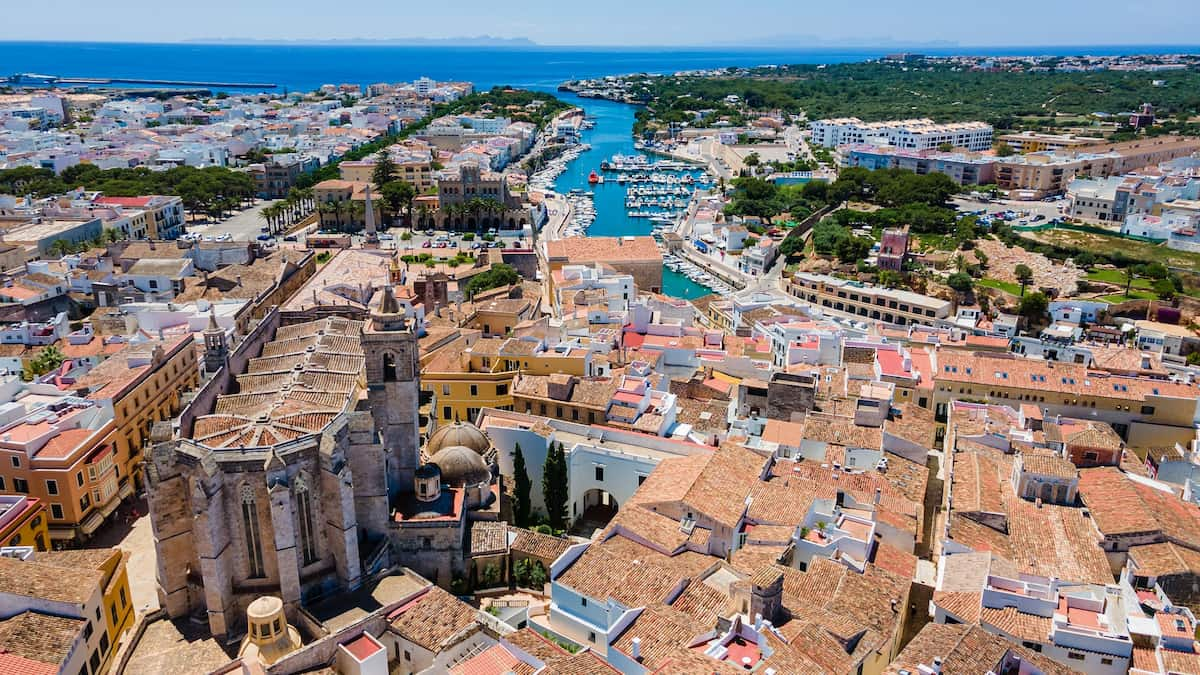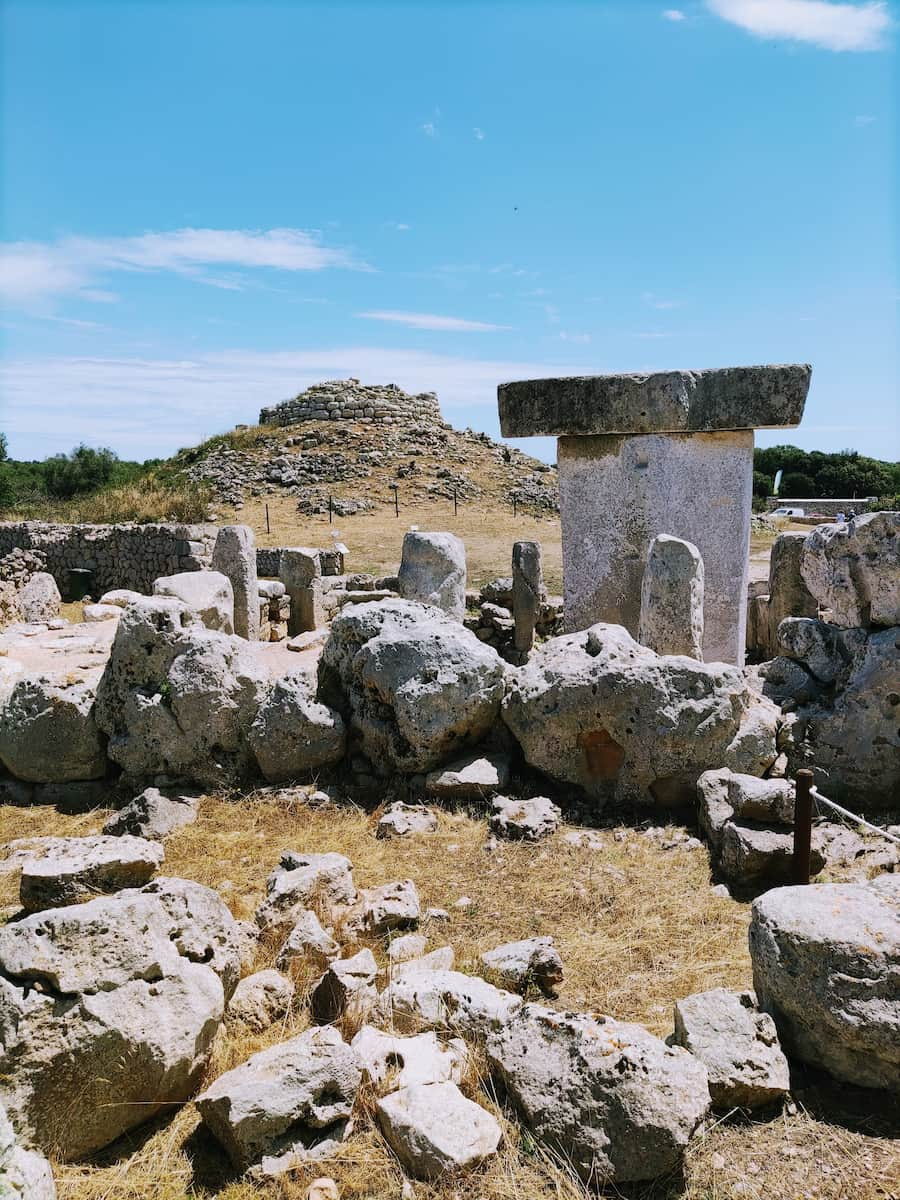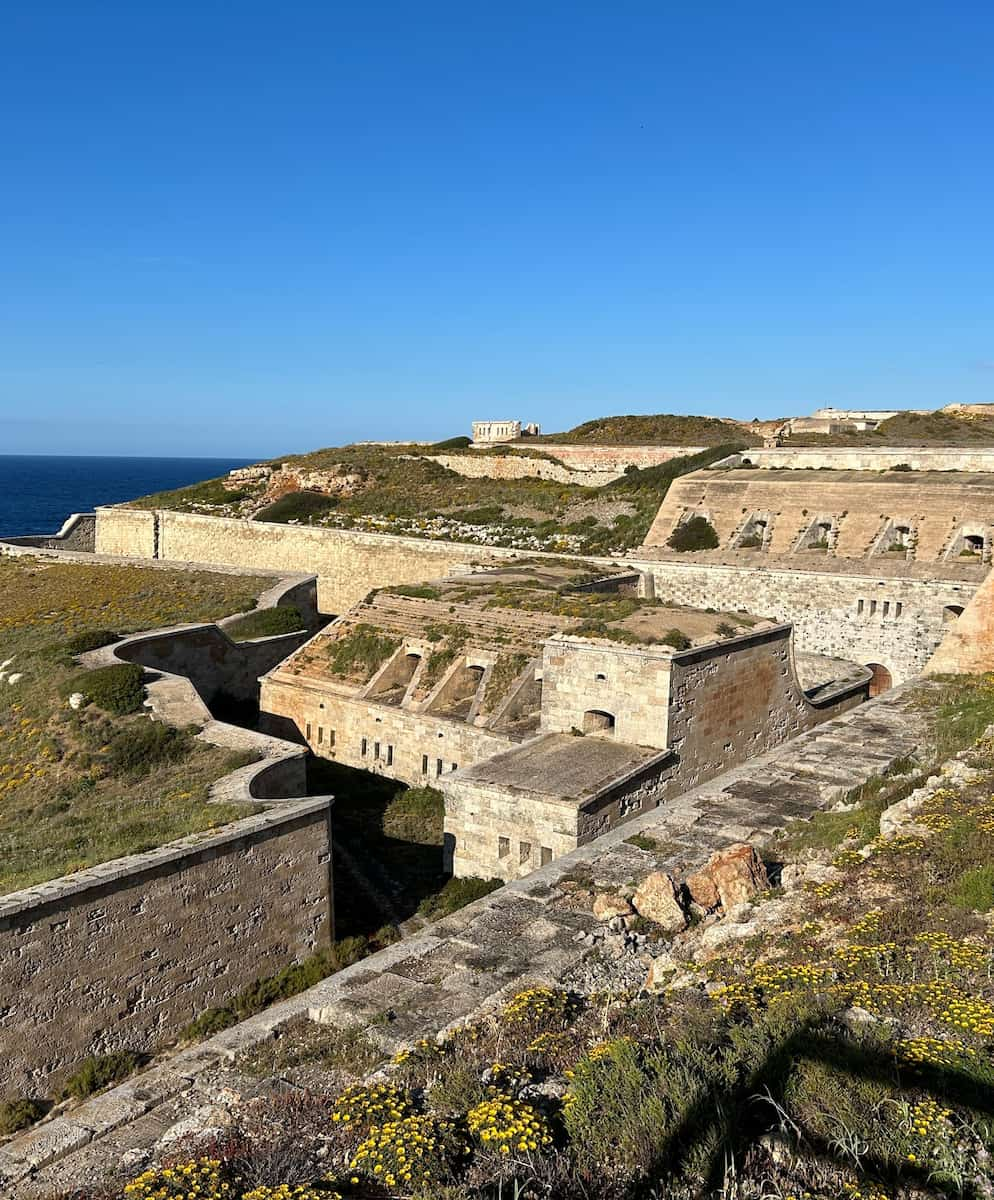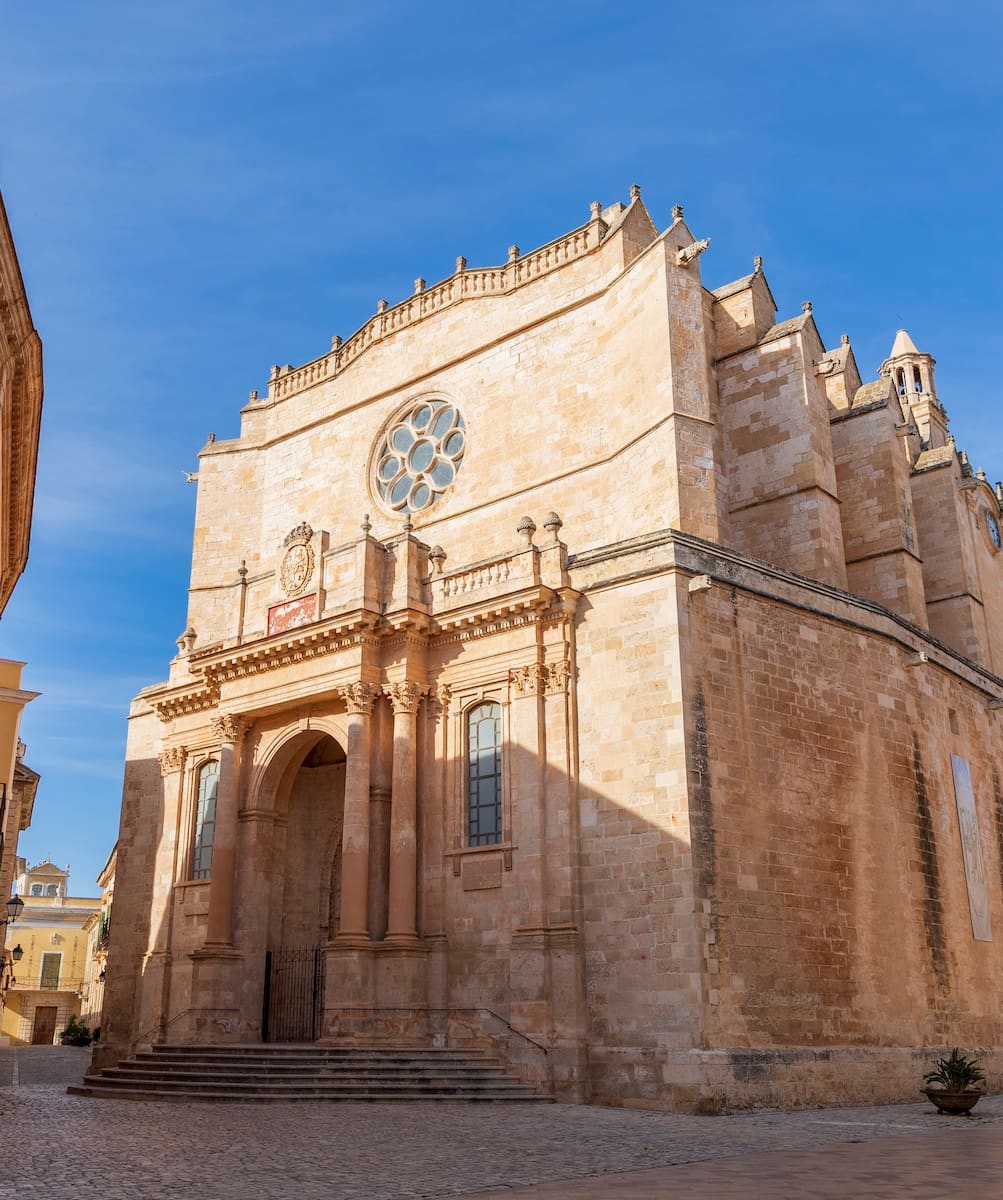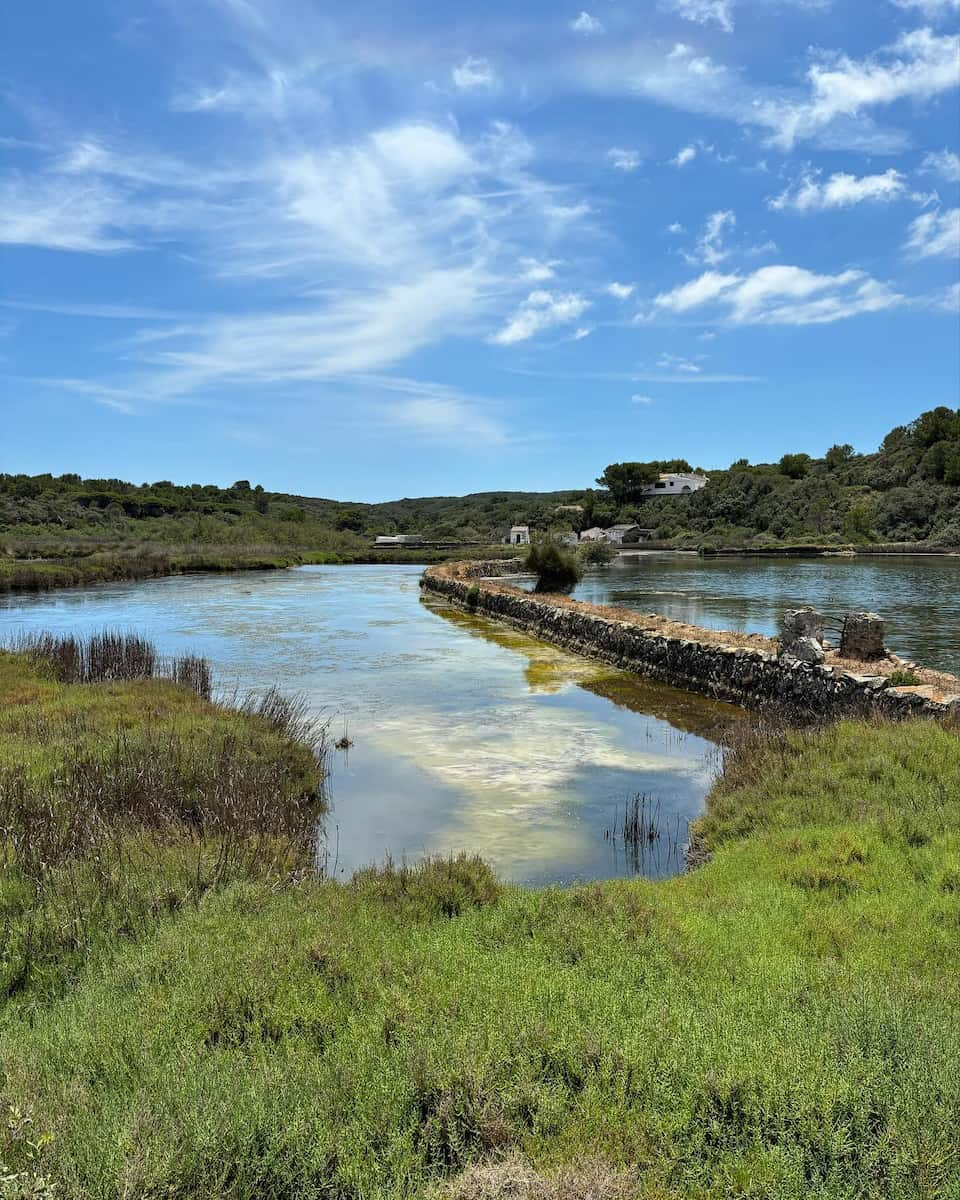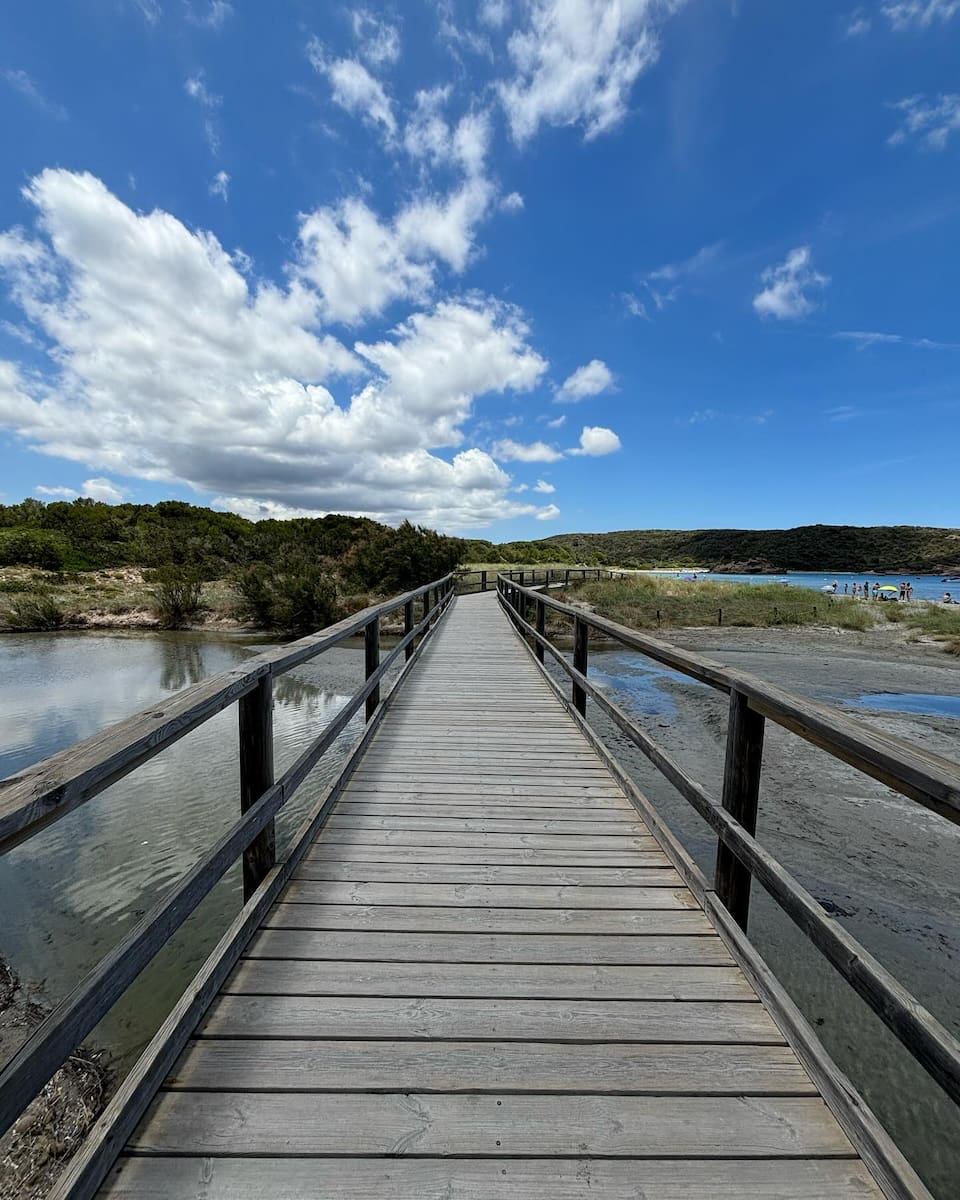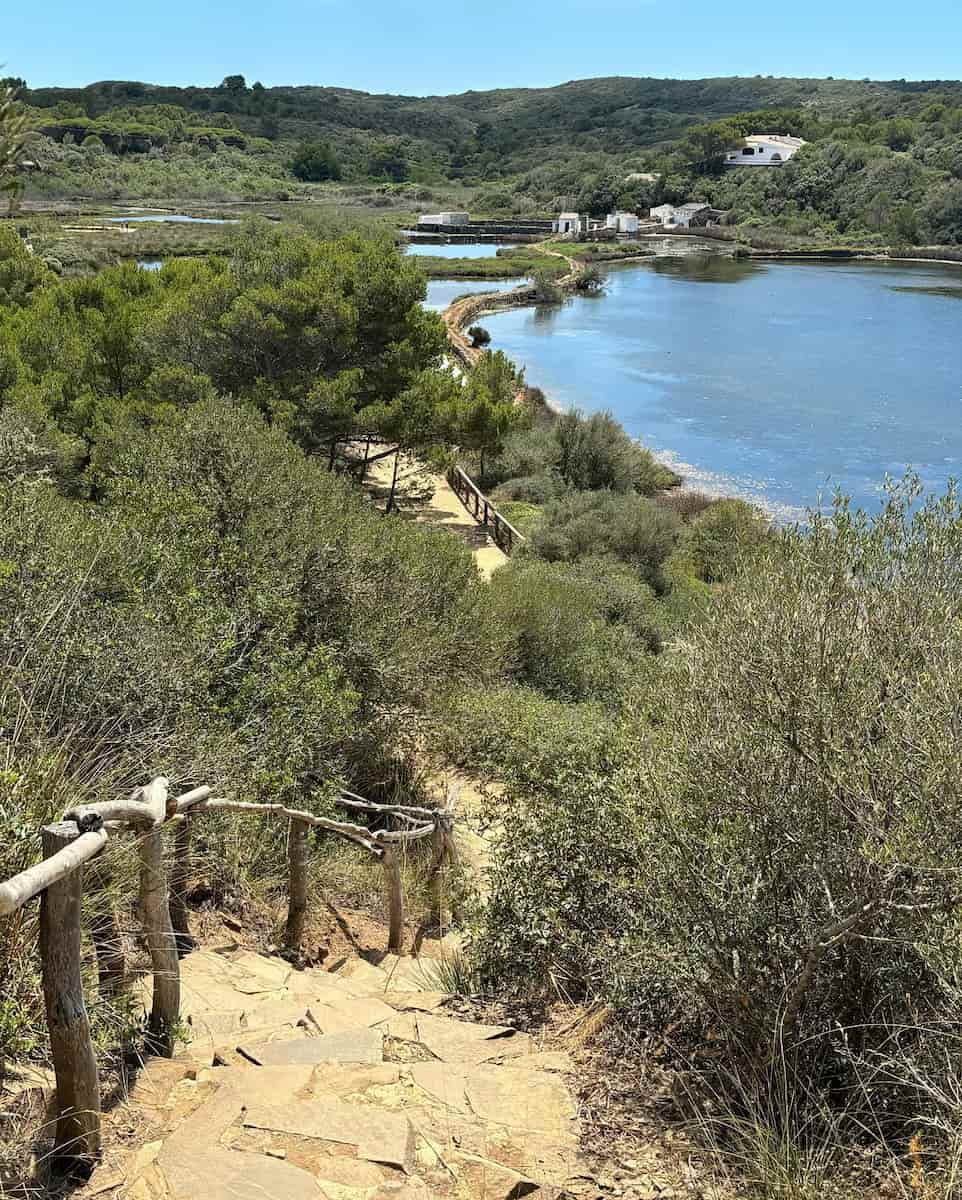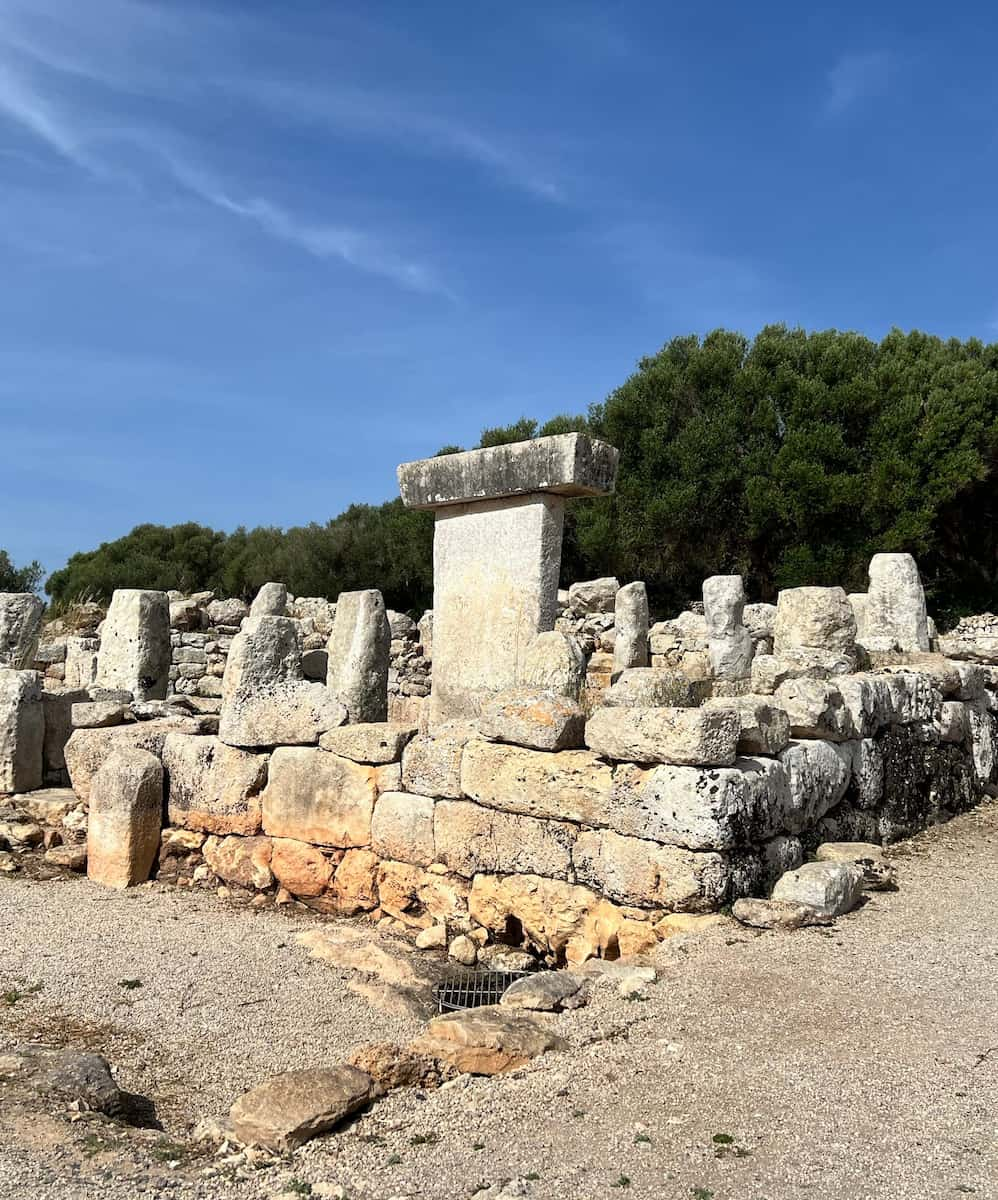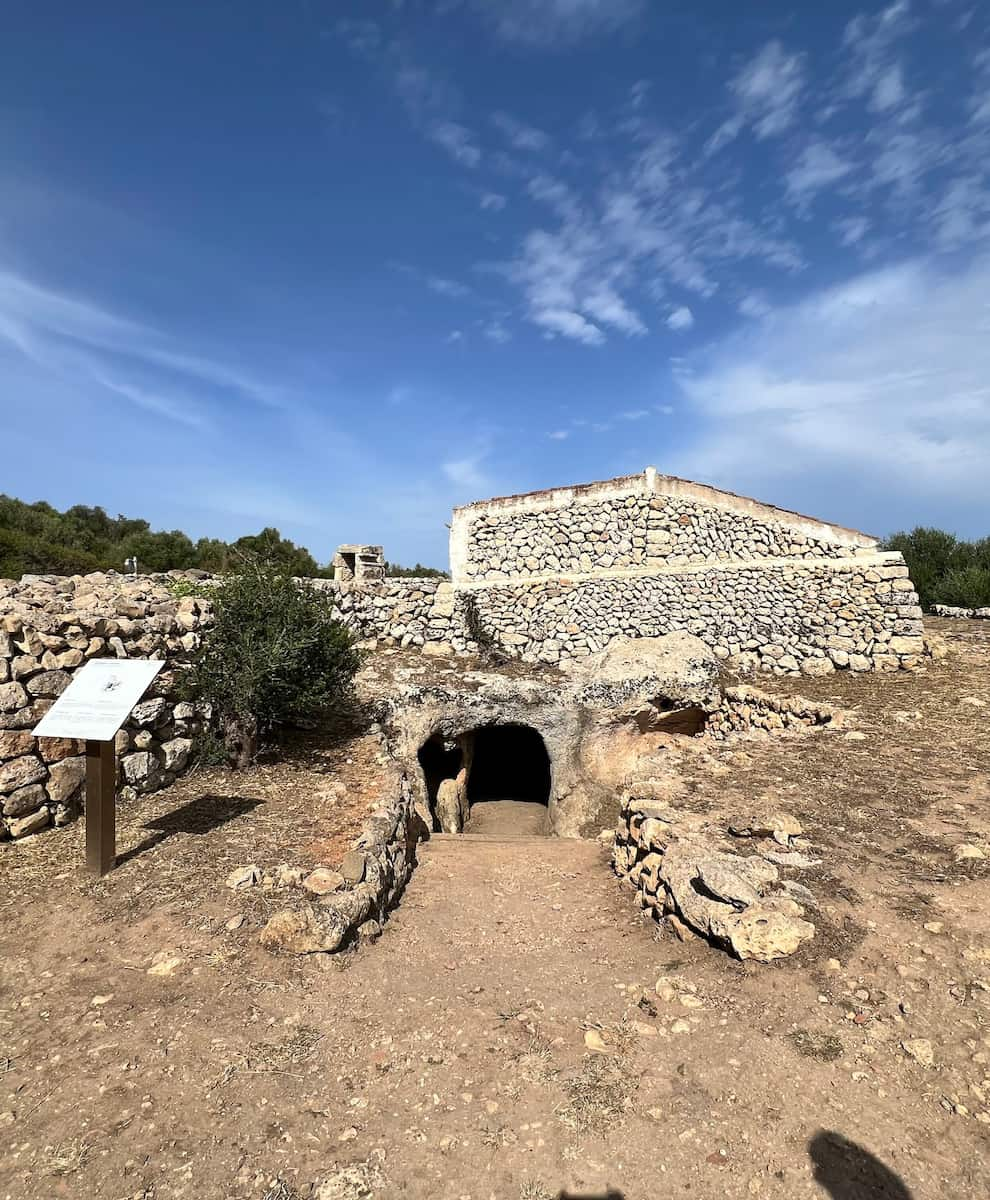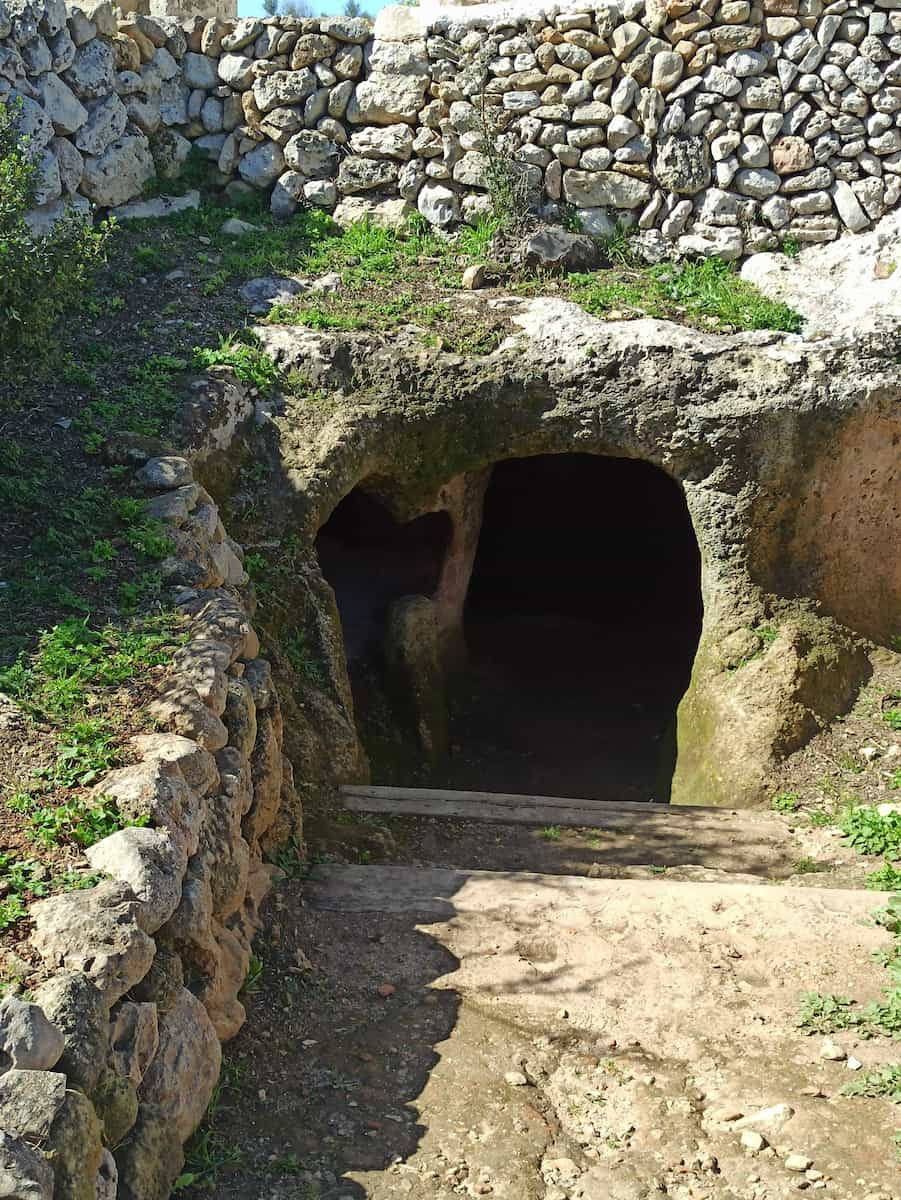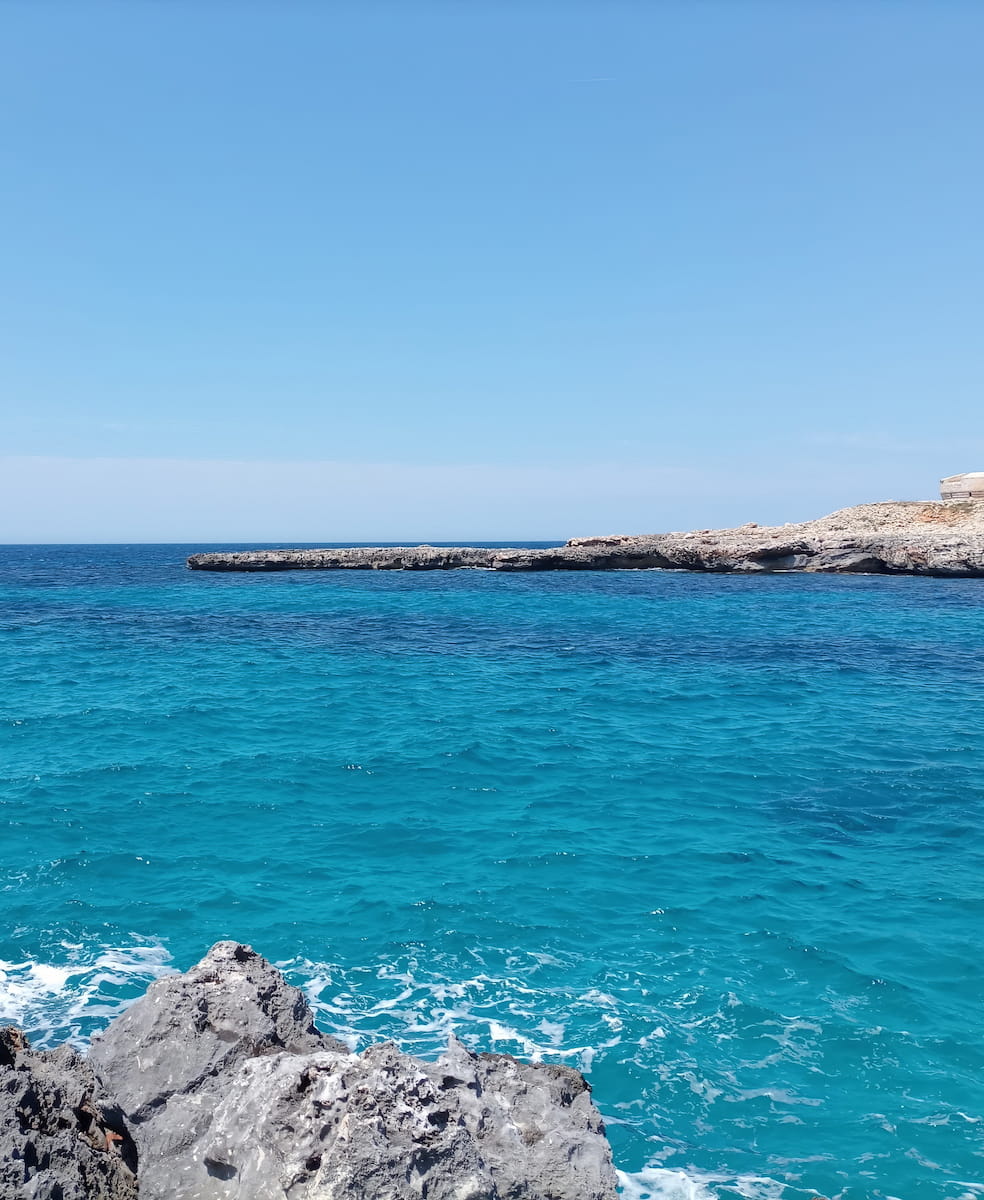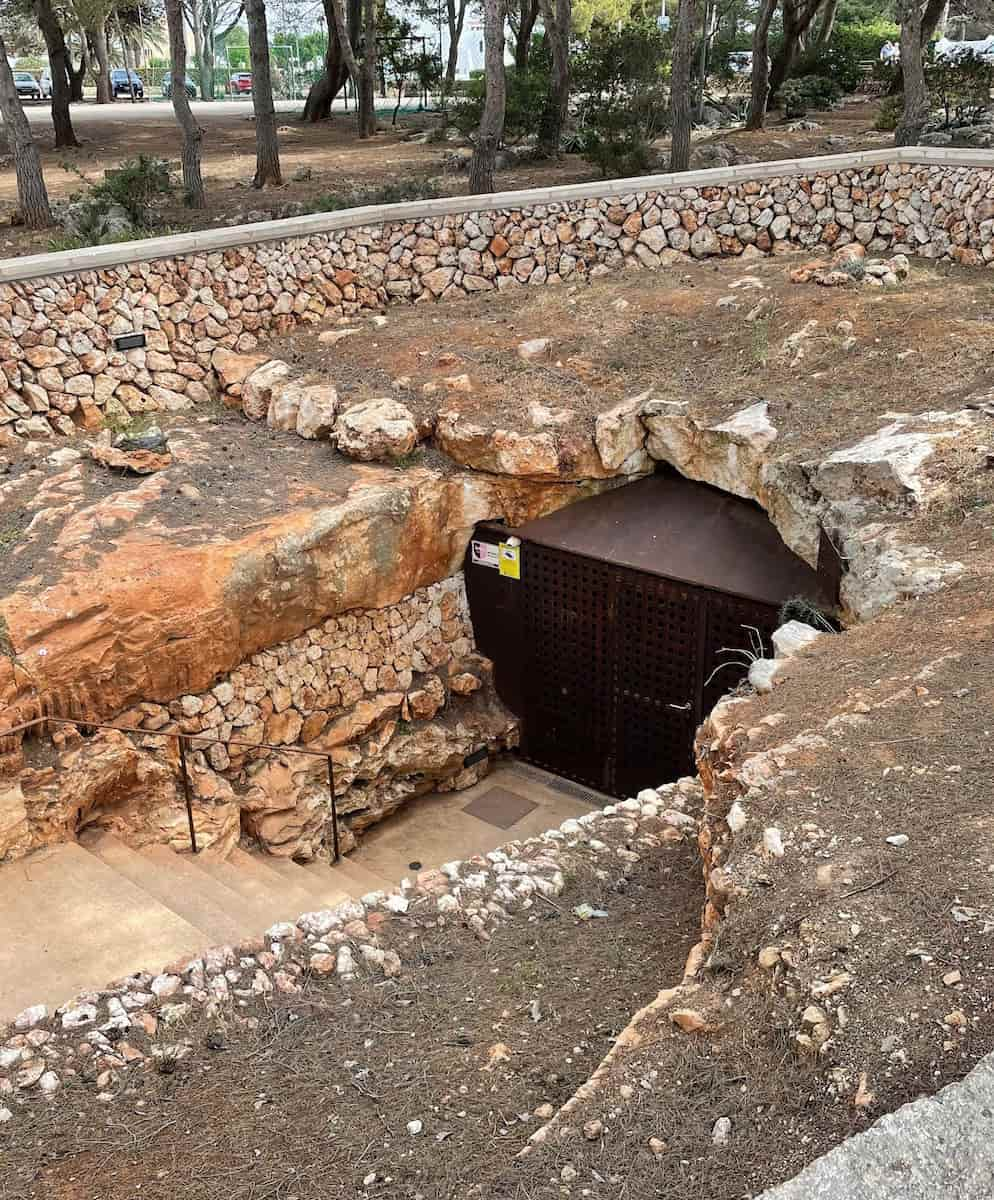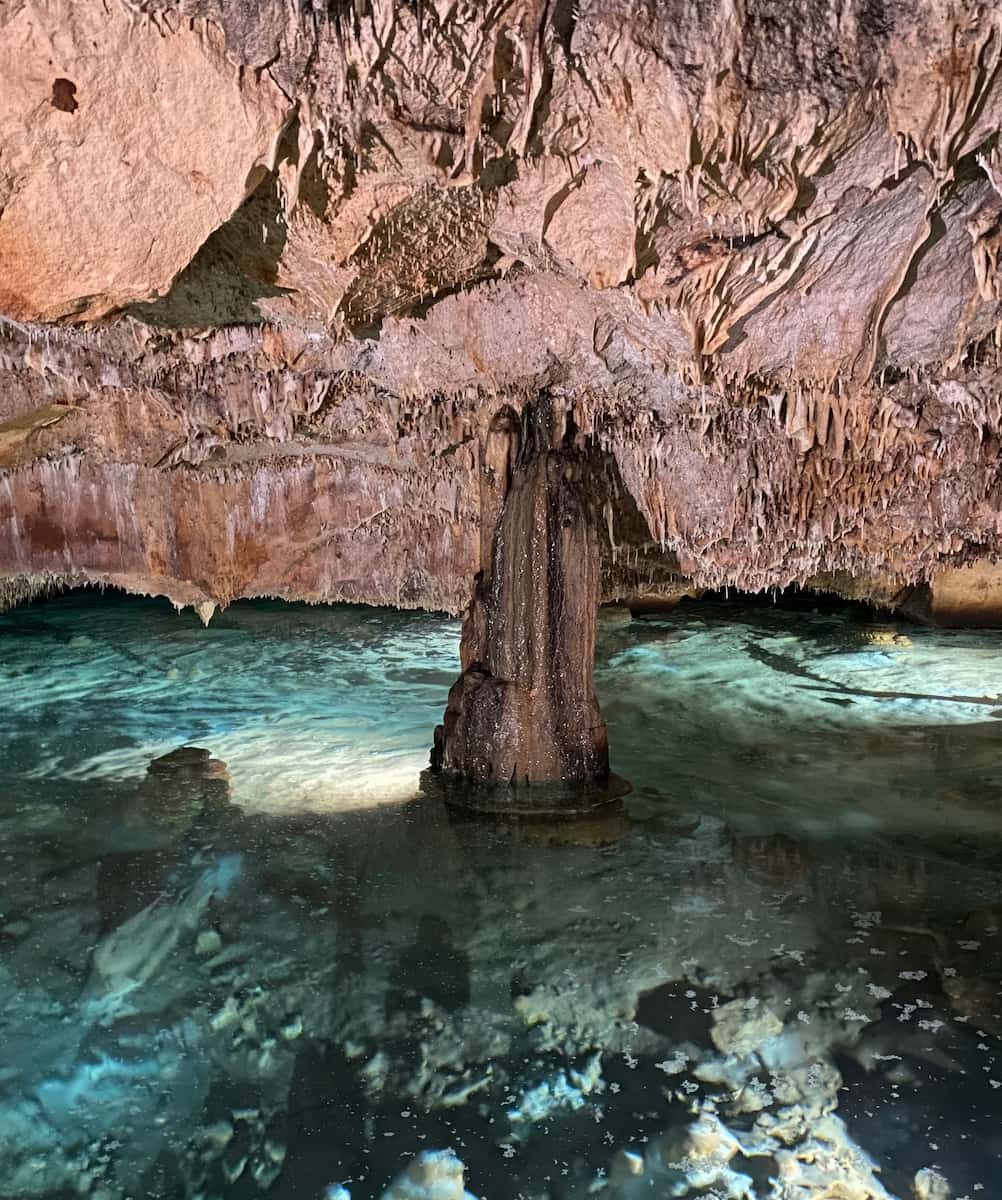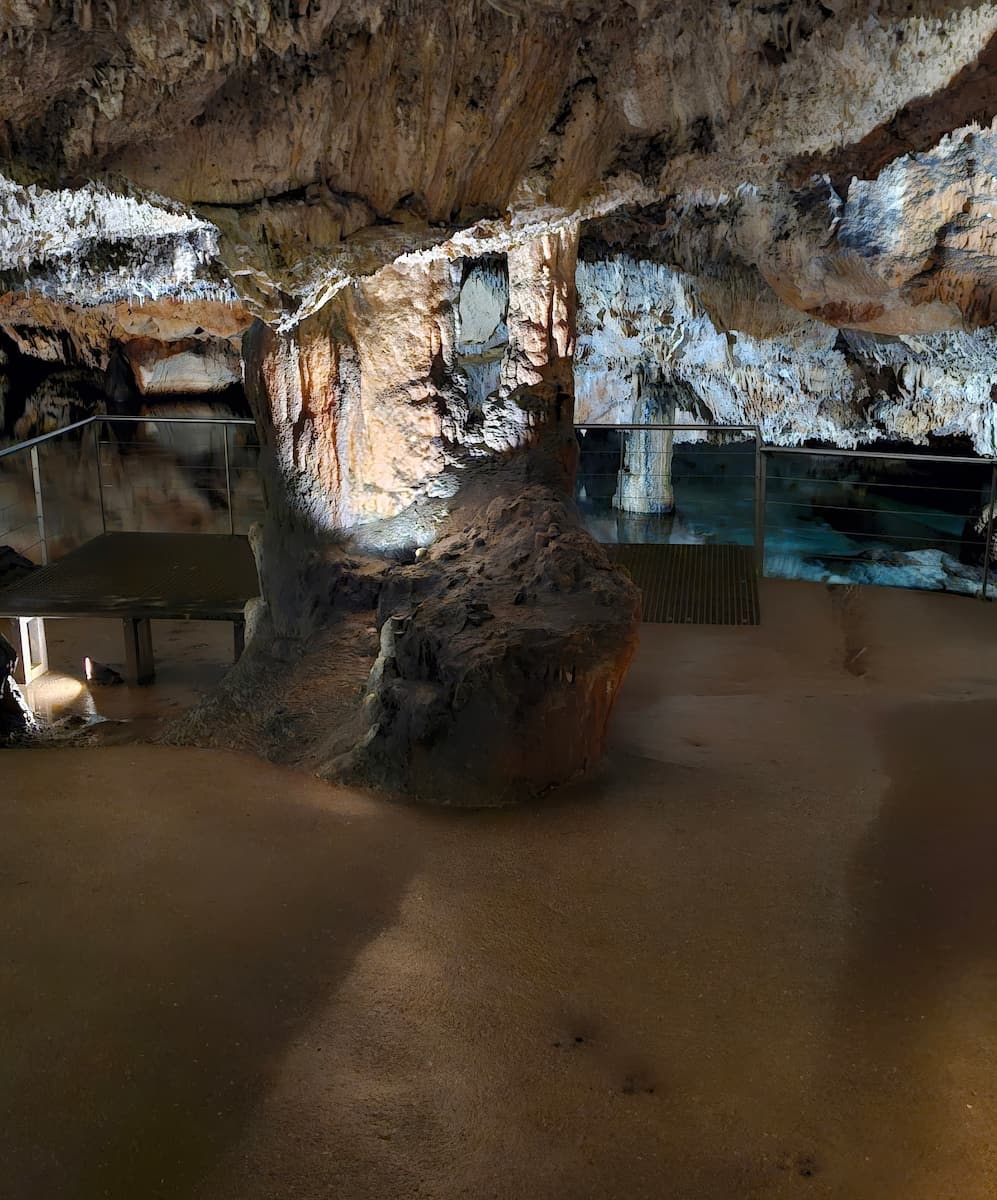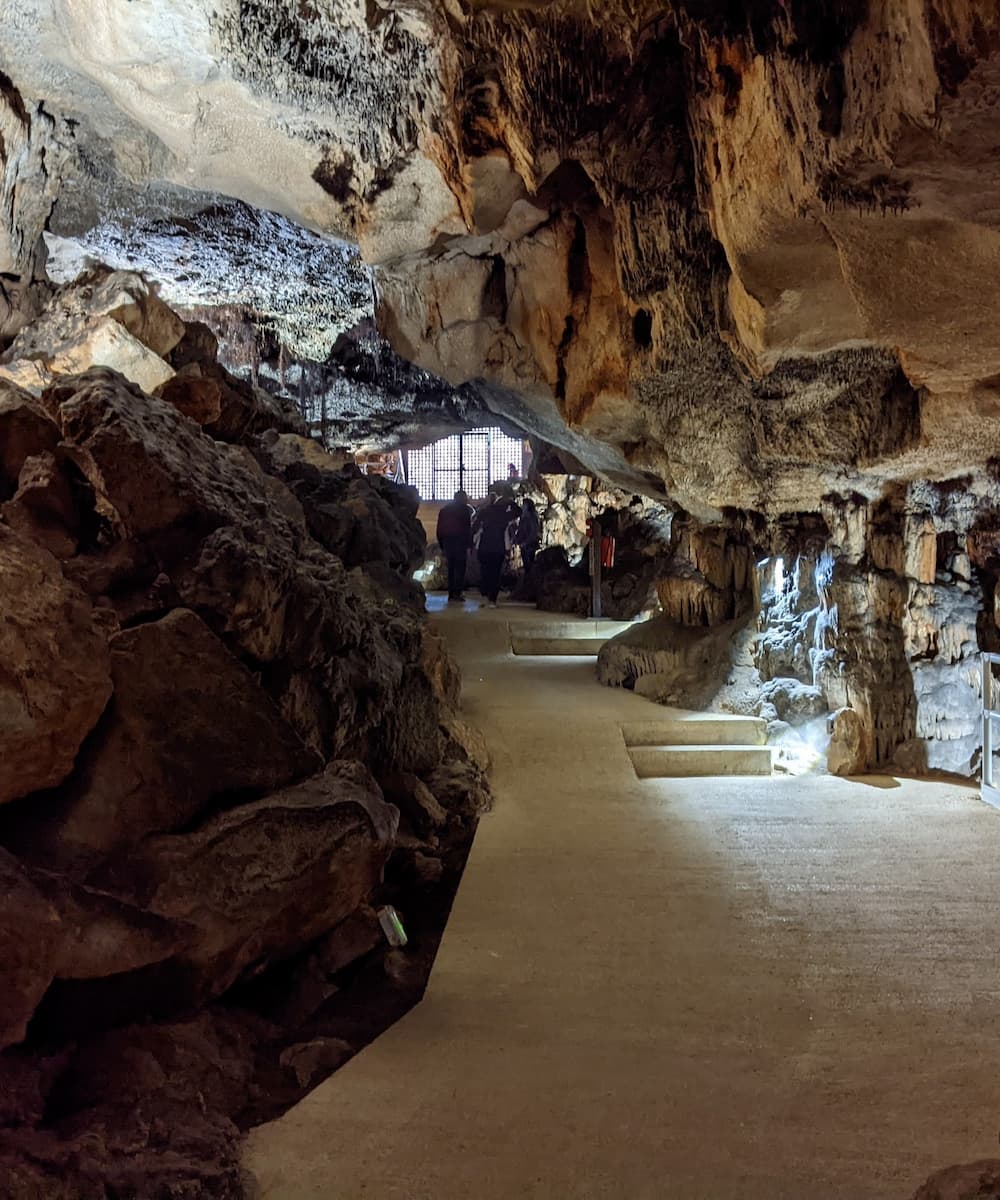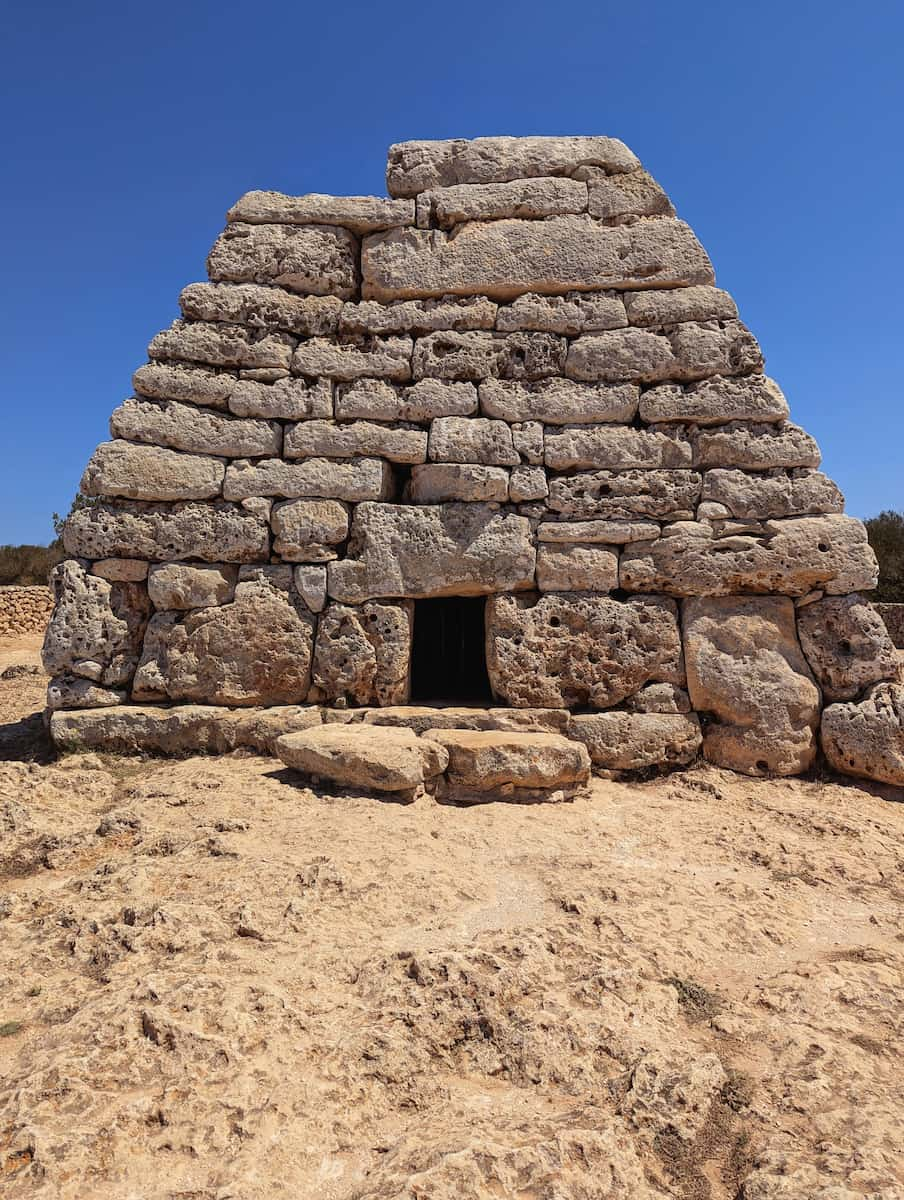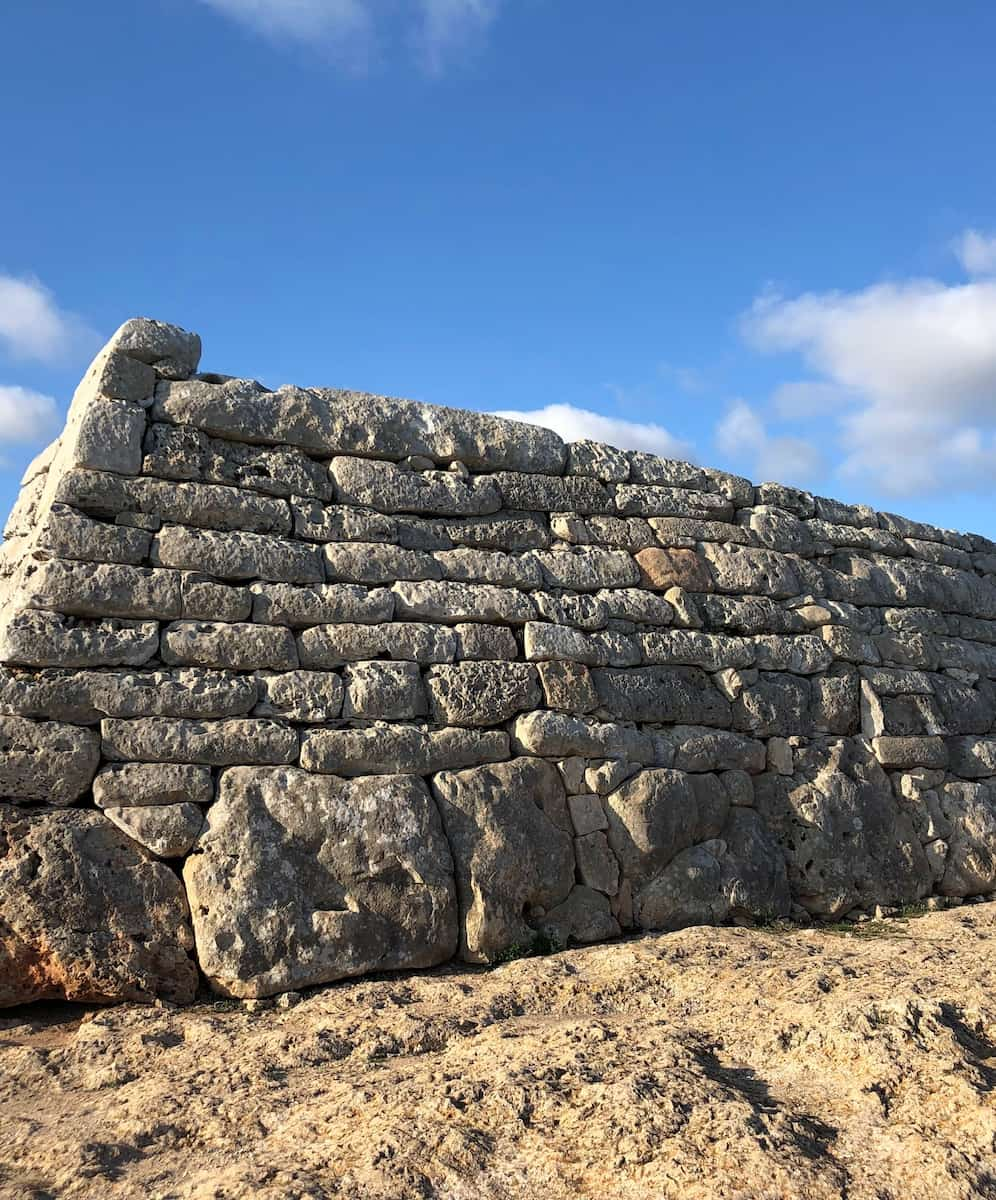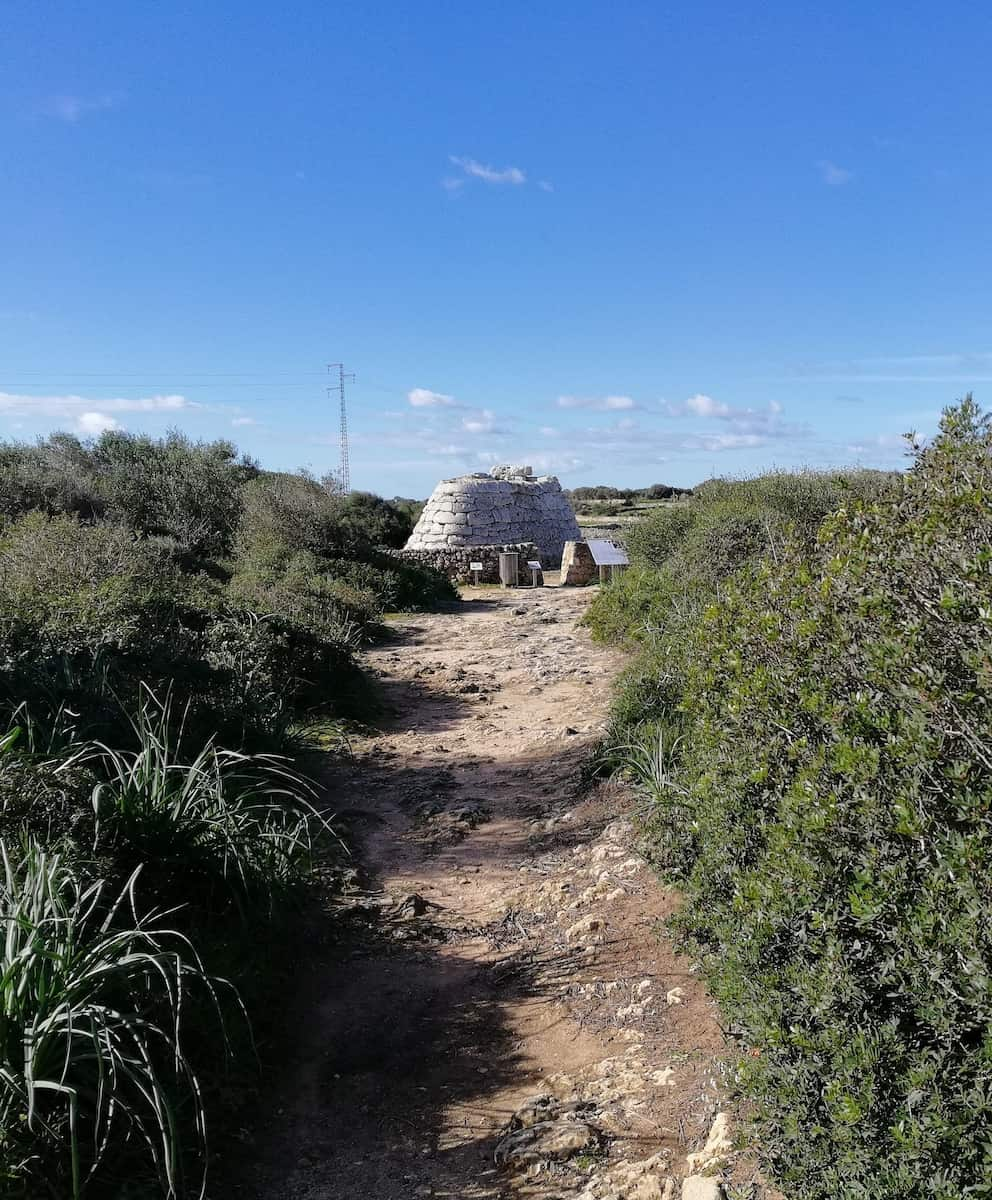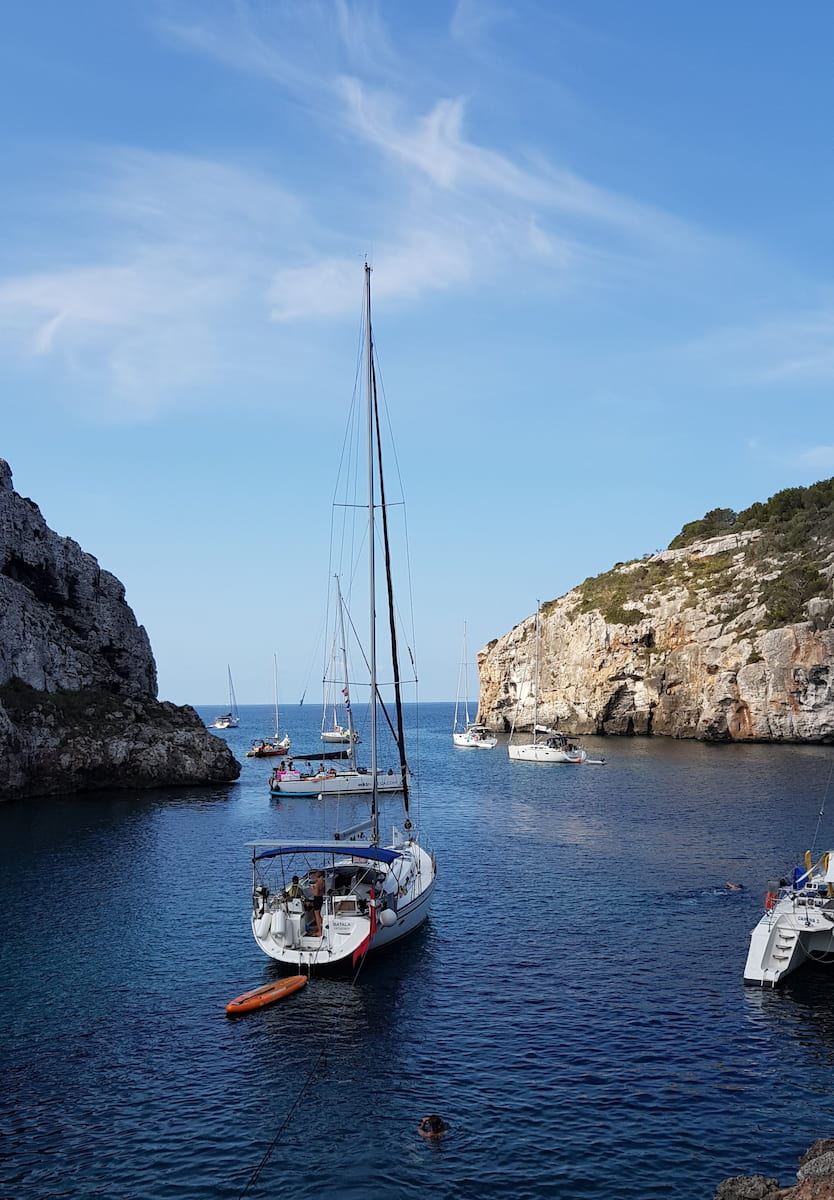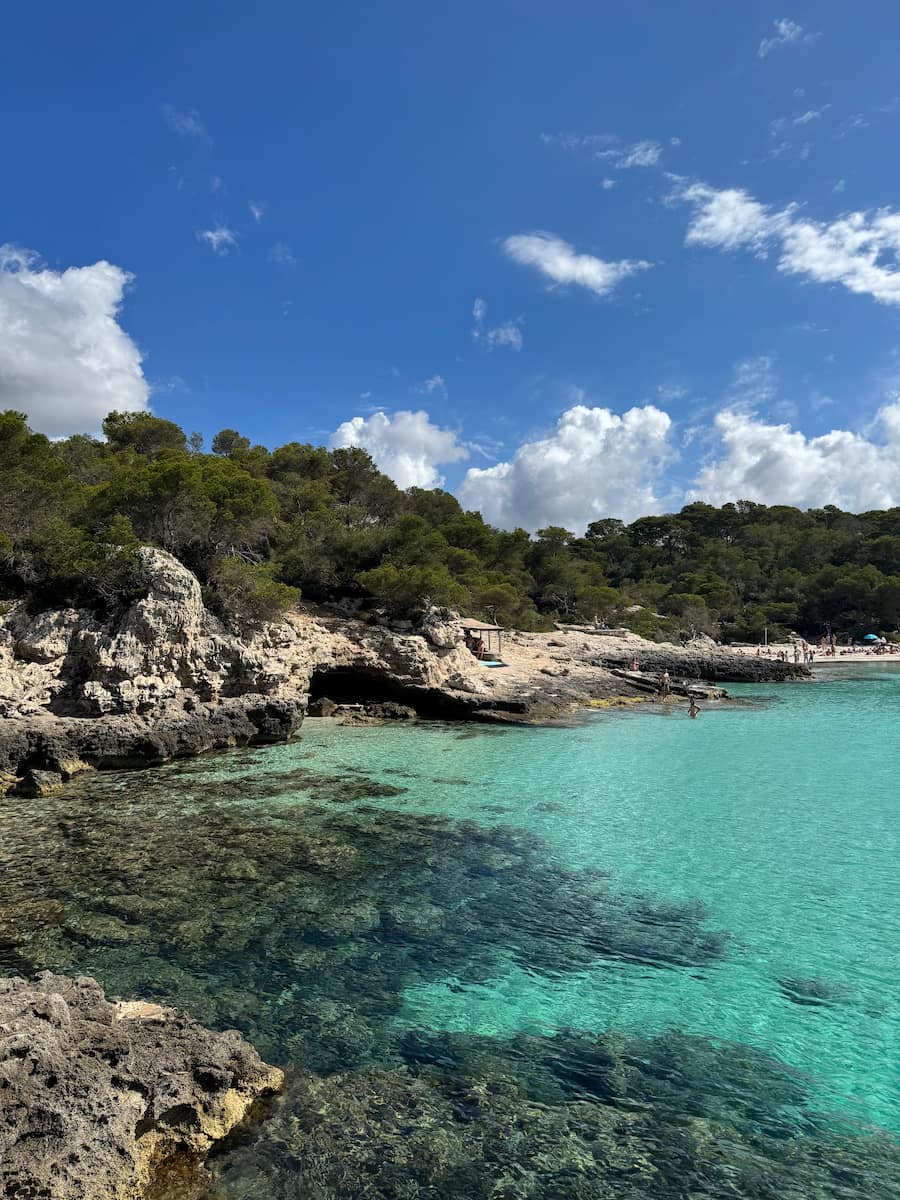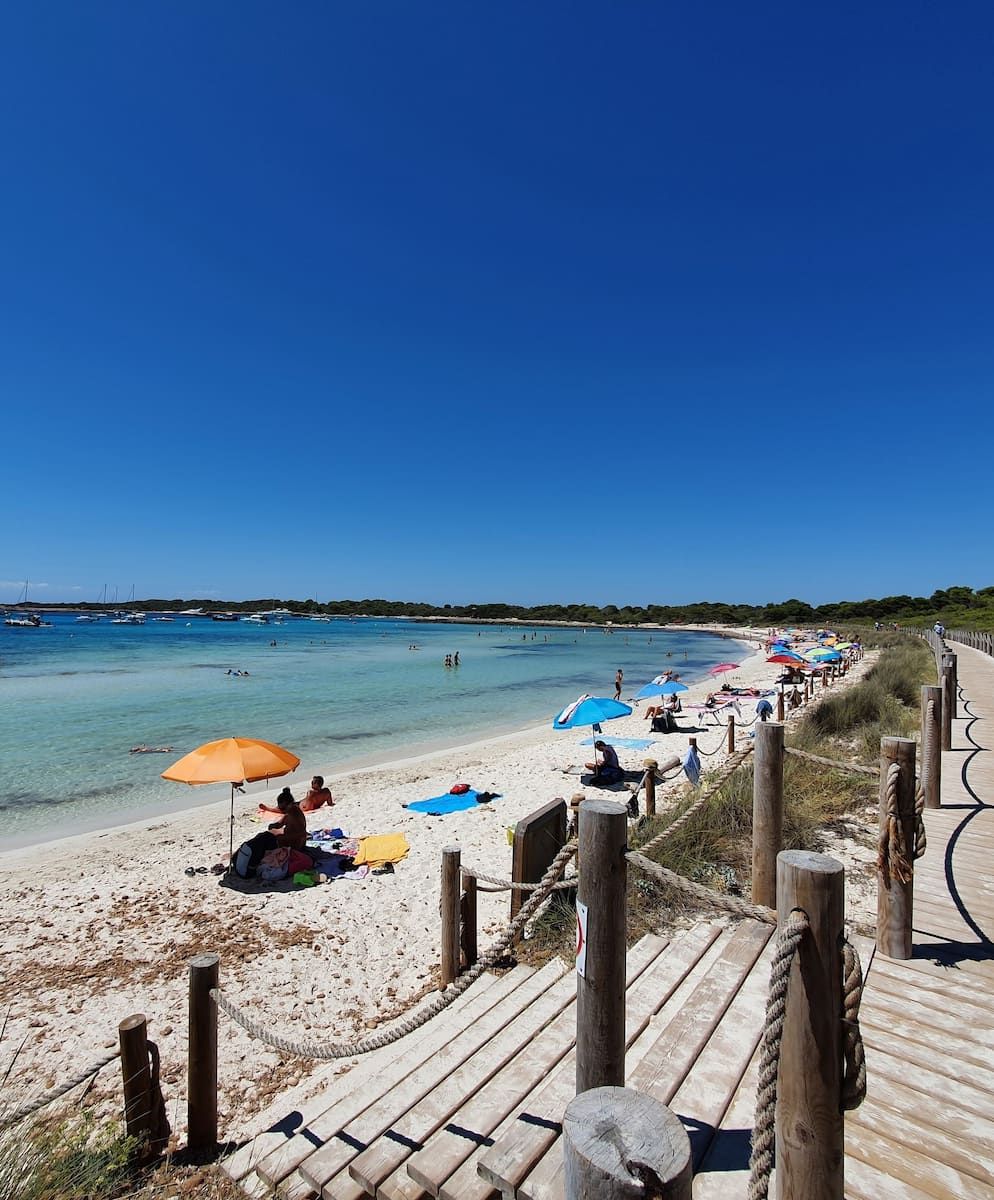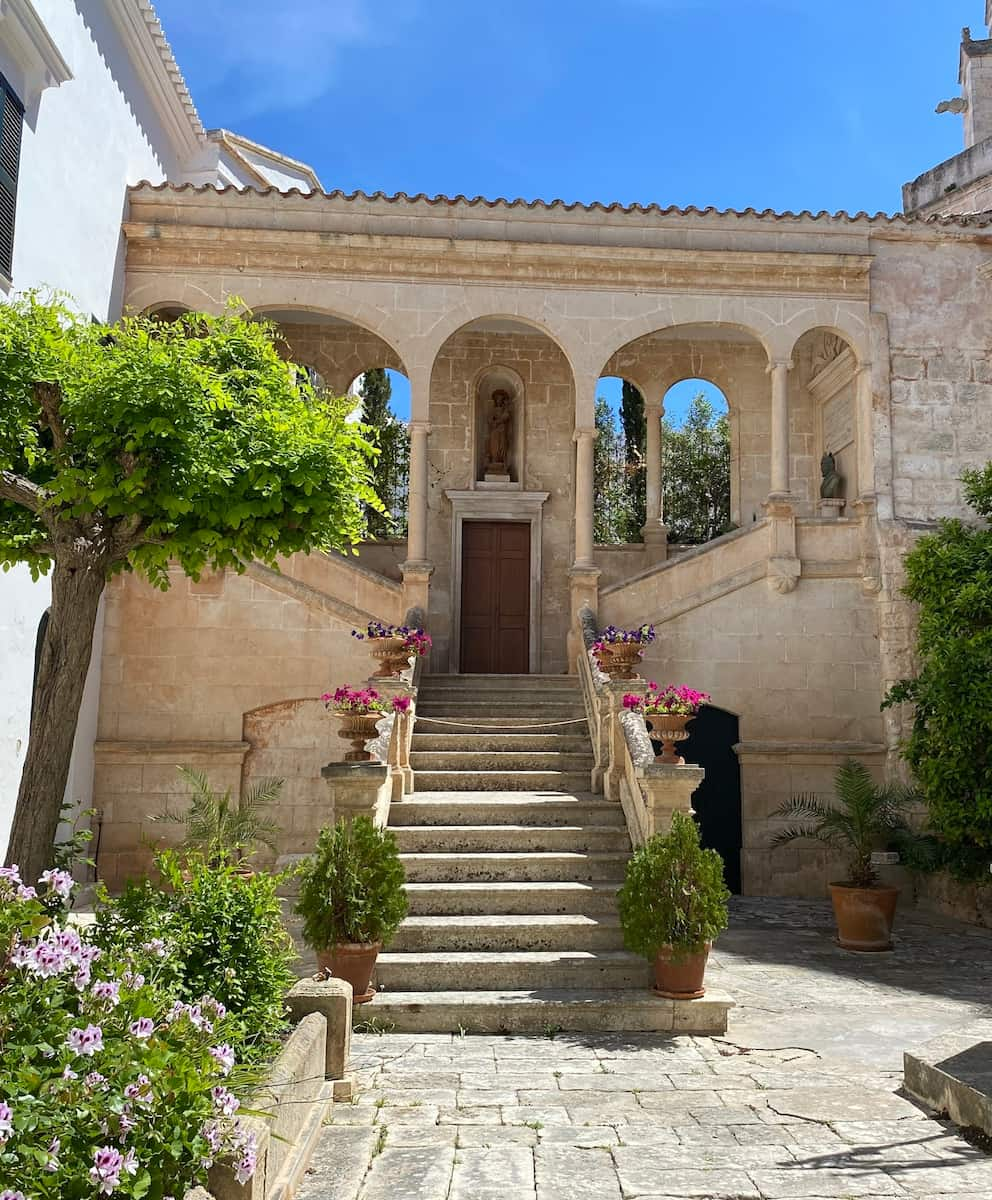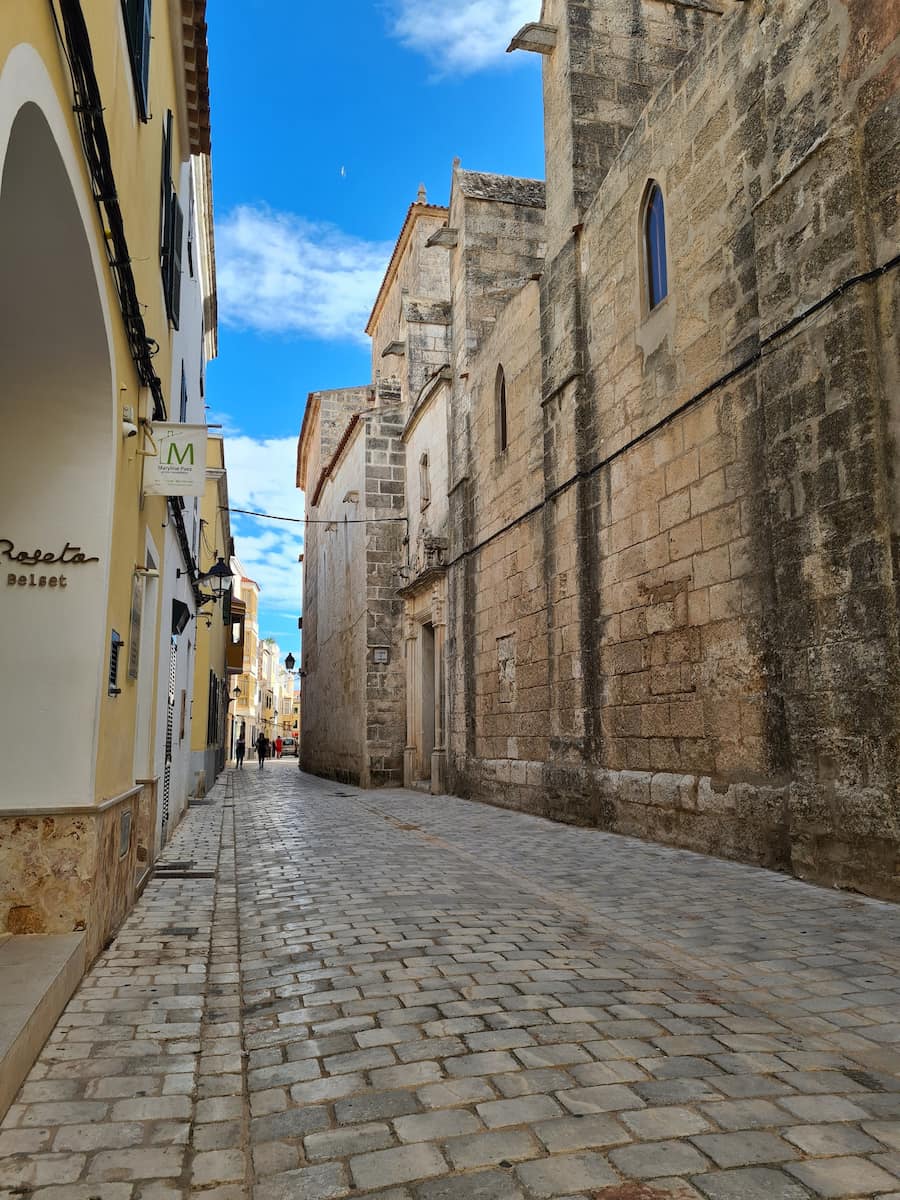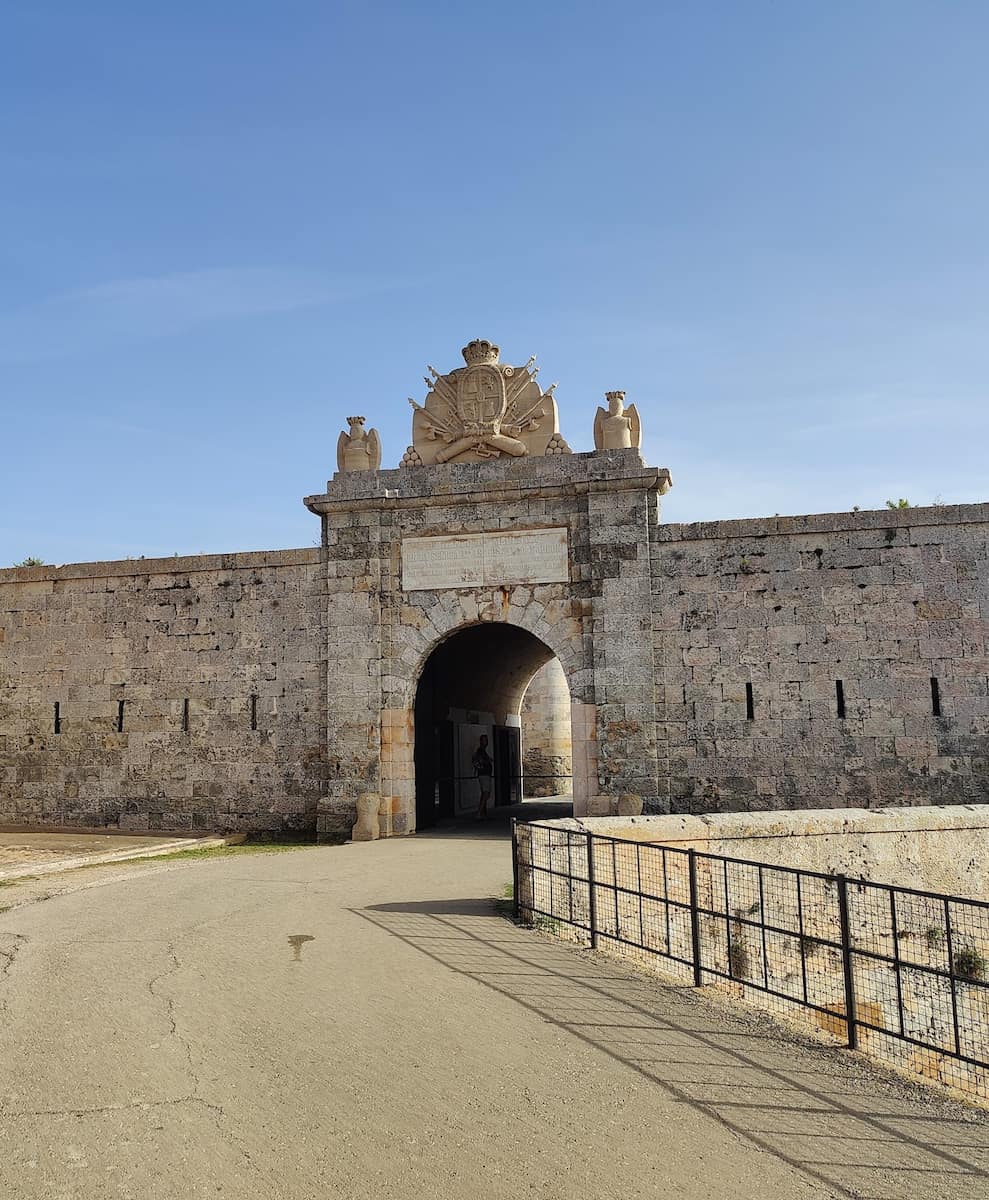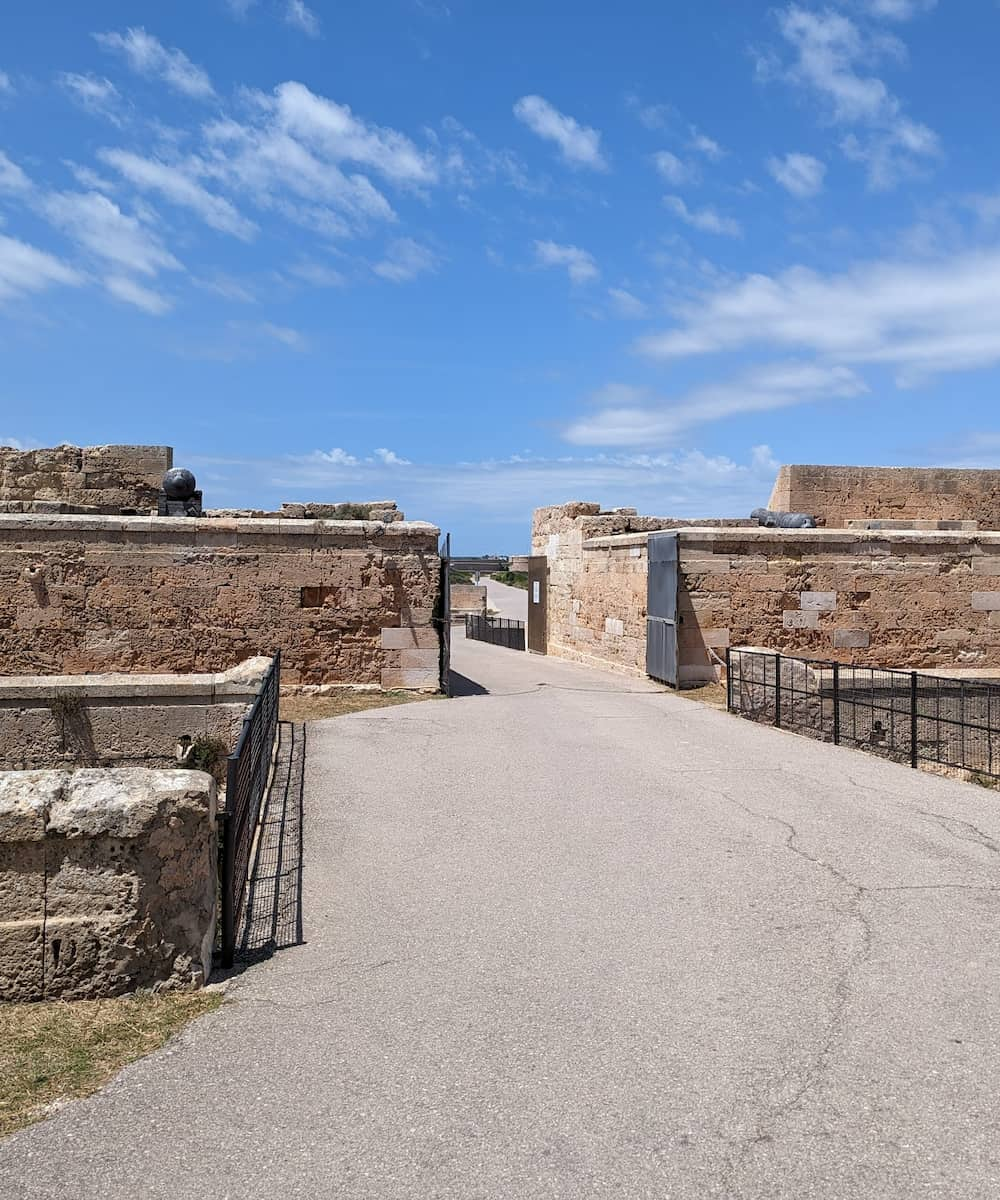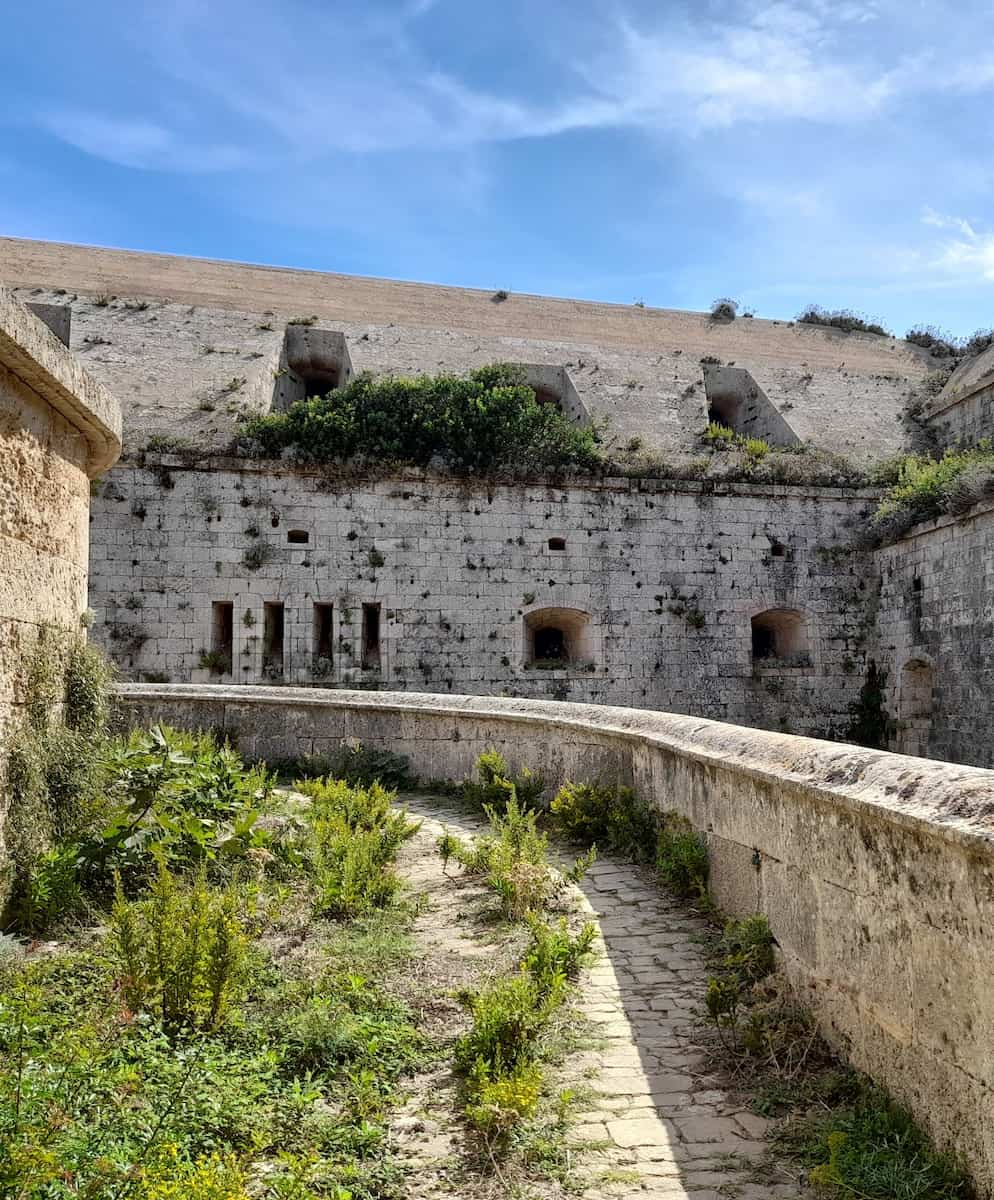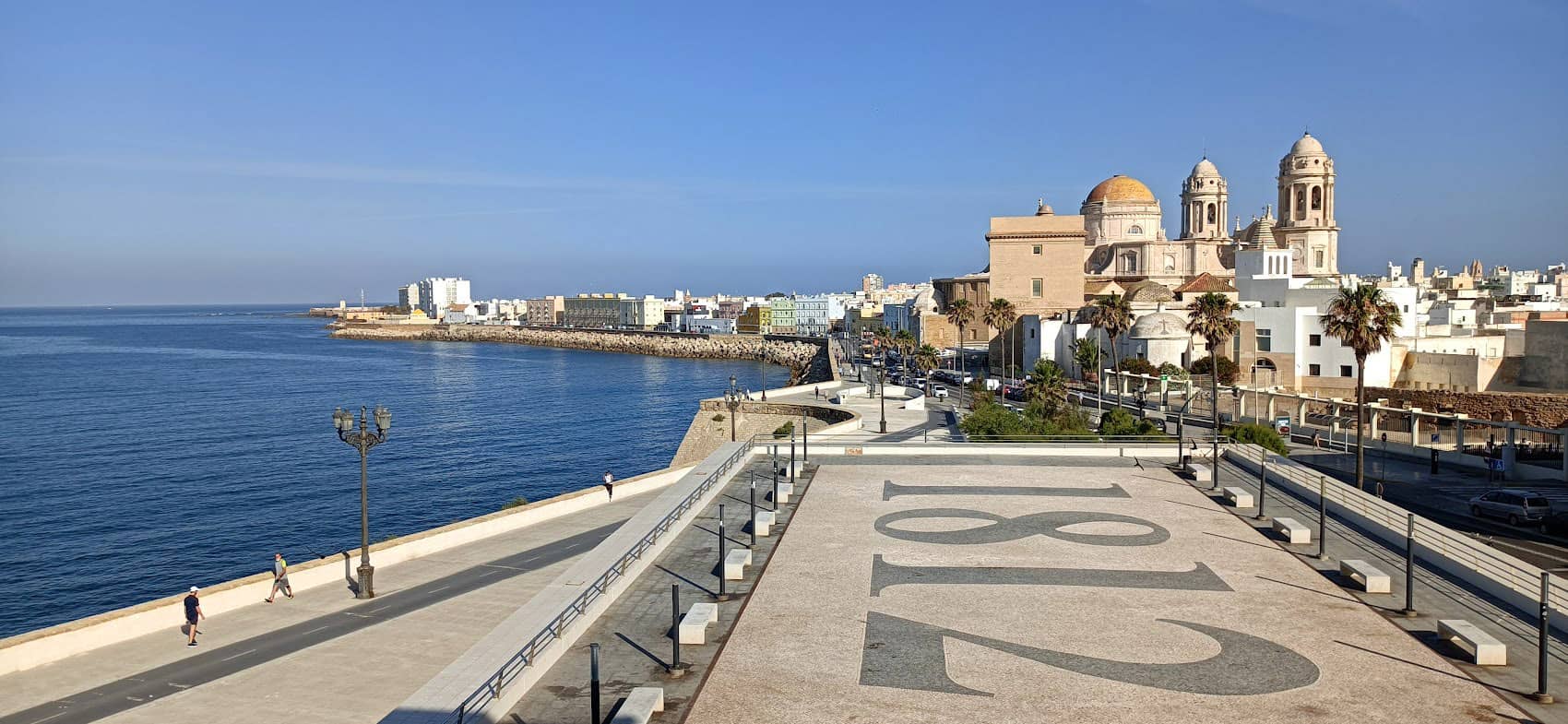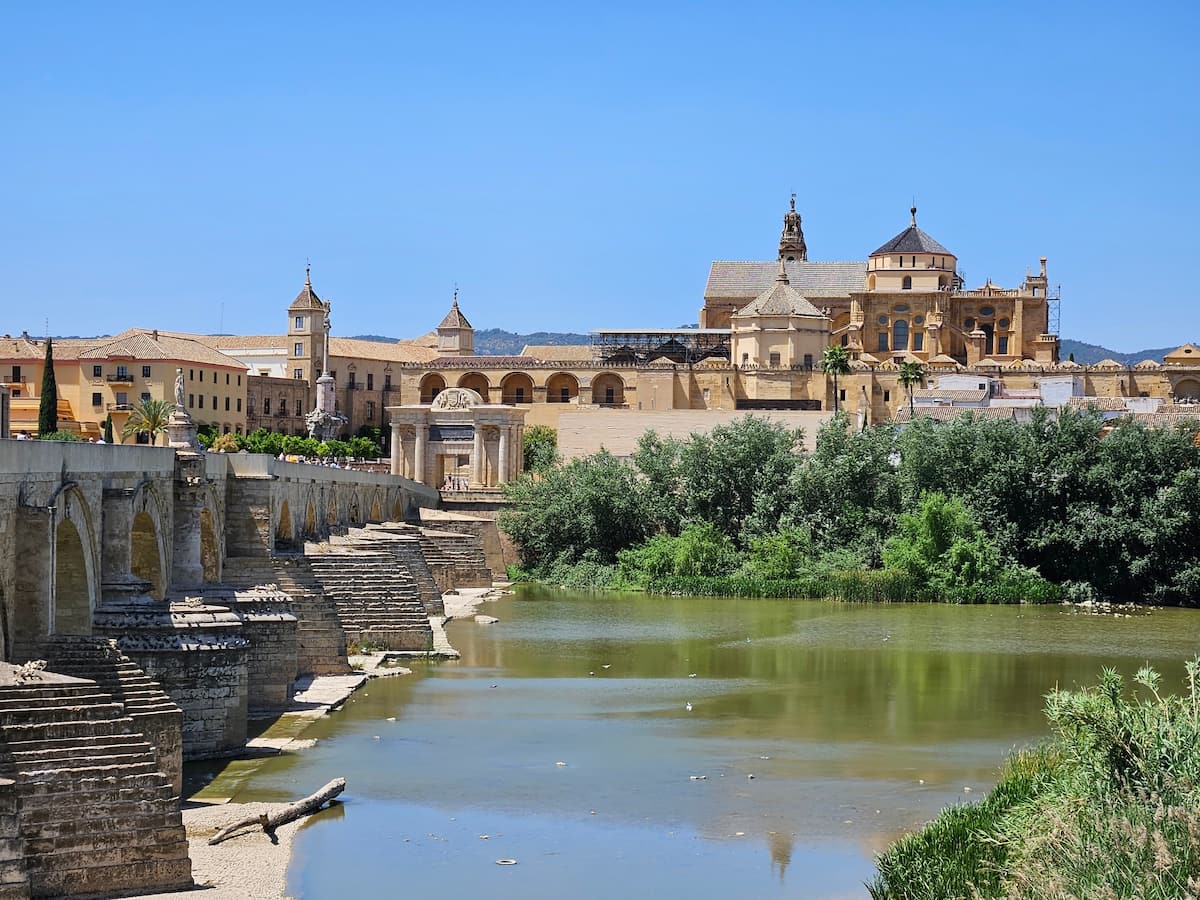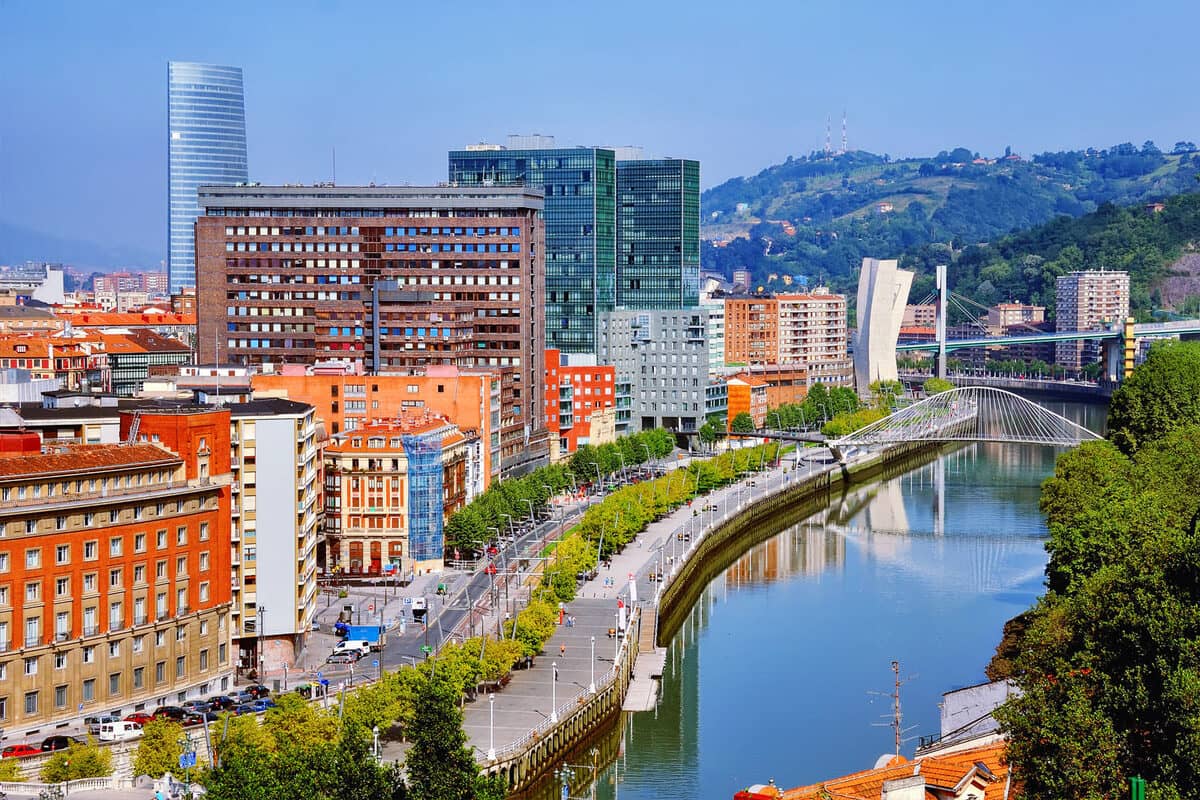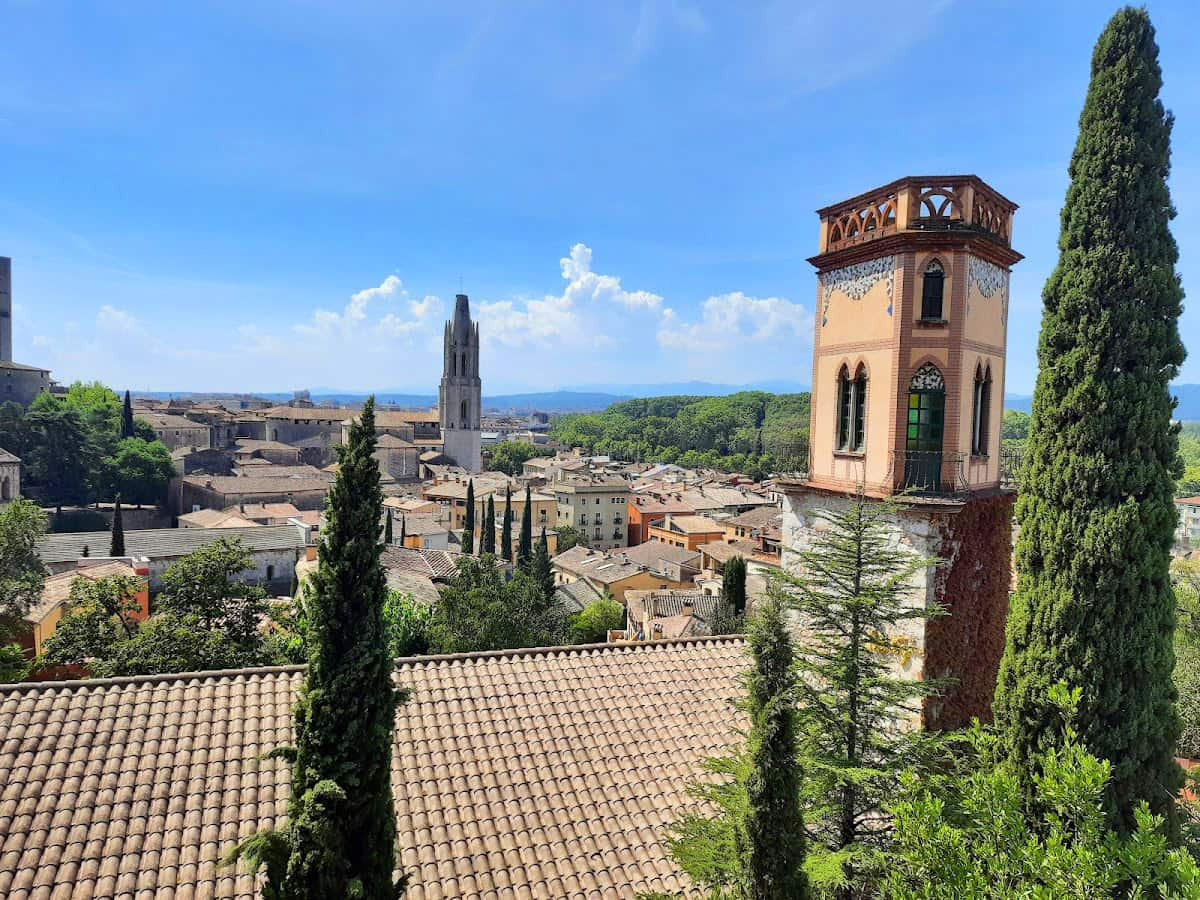The Spanish island of Menorca is one of the best places to visit in Spain, offering an enchanting blend of pristine beaches, rich history, and natural wonders. From the iconic Cova d’en Xoroi perched dramatically on limestone cliffs to the serene S’Albufera des Grau nature reserve, you’ll find countless things to see in Menorca that will make your trip to Menorca unforgettable.
🏡 Where to Stay in Menorca
- 💎 Luxury Hotel: Cristine Bedfor
- ✨ 5-Star: Can Araya
- 🏨 4-Star: Catalonia Mirador des Port
- 🛏️ 3-Star: White Sands Beach Club
- 💸 Cheap: Hostal Ciutadella
- 🏢 Apartament: Apartamentos Vista Playa I
- 👨👩👧👦 For Families: Hevresac
- 🏩 For Couples: Agroturismo Rafal Rubí
Visitors to Menorca can explore the entire island’s treasures, from the historic capital of Menorca, Mahón, with its Museum of Menorca, to the resort town of Cala Galdana nestled along the island’s stunning shores. Don’t miss the chance to discover the Menorca Marine Reserve, hike the ancient paths, or simply unwind on secluded beaches – it’s one of the best ways to experience the authentic charm of this Mediterranean paradise.
👩🏫 Best Guided Tours
- Discovery Tour from € 40 (⭐ 4.5/5)
- Tour of the North Coast of Menorca by Boat from € 40 (⭐ 4.8/5)
- Jeep Safari Menorca from € 90 (⭐ 4.9/5)
- Visit the 10 most beautiful beaches in Menorca By Boat from € 80 (⭐ 4.8/5)
- MAHON AND SURROUNDINGS from € 70 (⭐ 4.8/5)
Best Things To Do in Menorca
1. 🏖️ Cala Macarella and Macarelleta Beaches
Natural Beauty: These twin beaches represent the crown jewels of Menorca’s southern coast, where turquoise waters reach depths of up to 10 meters perfect for snorkeling. The protected cove of Macarella stretches 140 meters in length and offers basic facilities including a beach bar and restrooms. The smaller Macarelleta, accessible via a 15-minute coastal walk, remains one of the most photographed beaches in the Mediterranean.
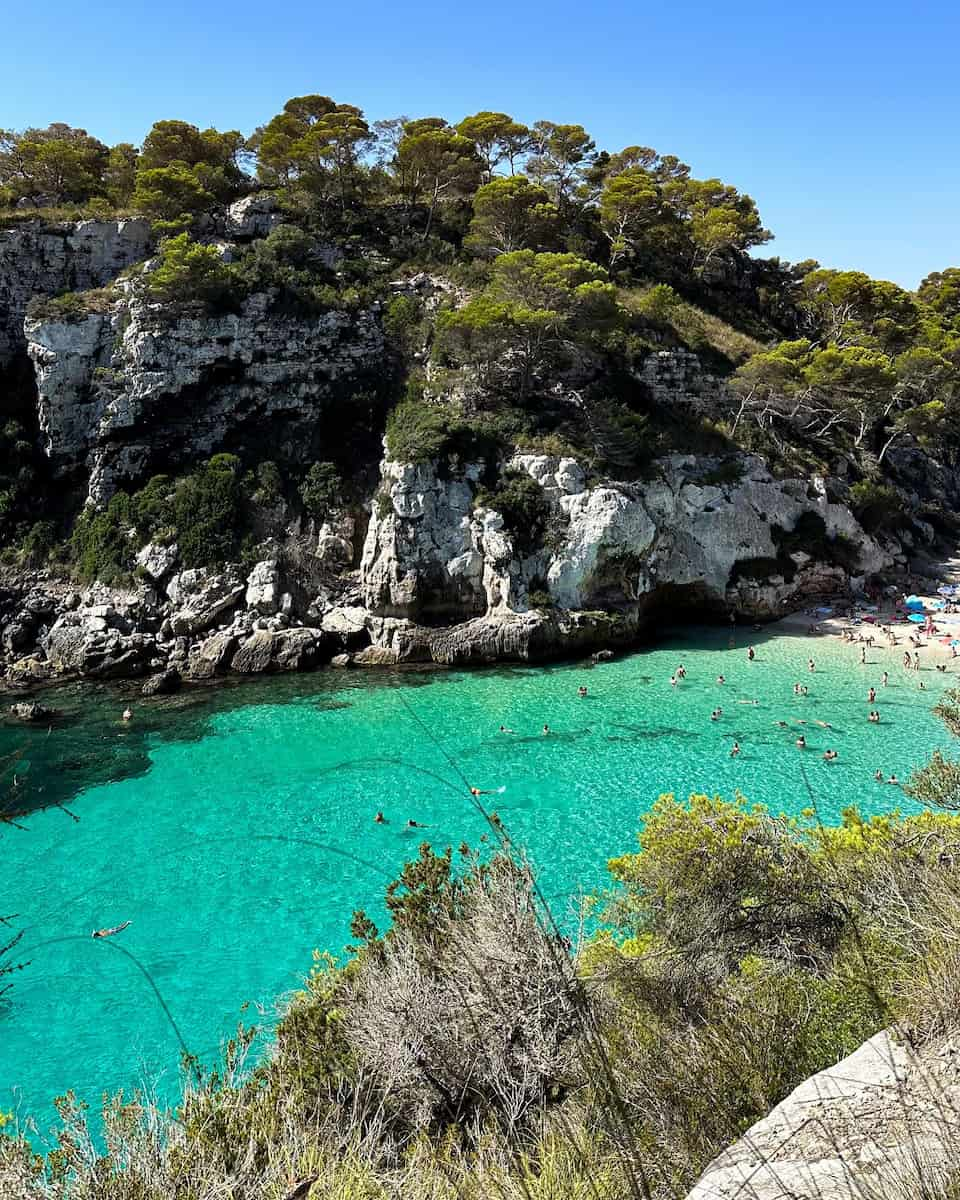
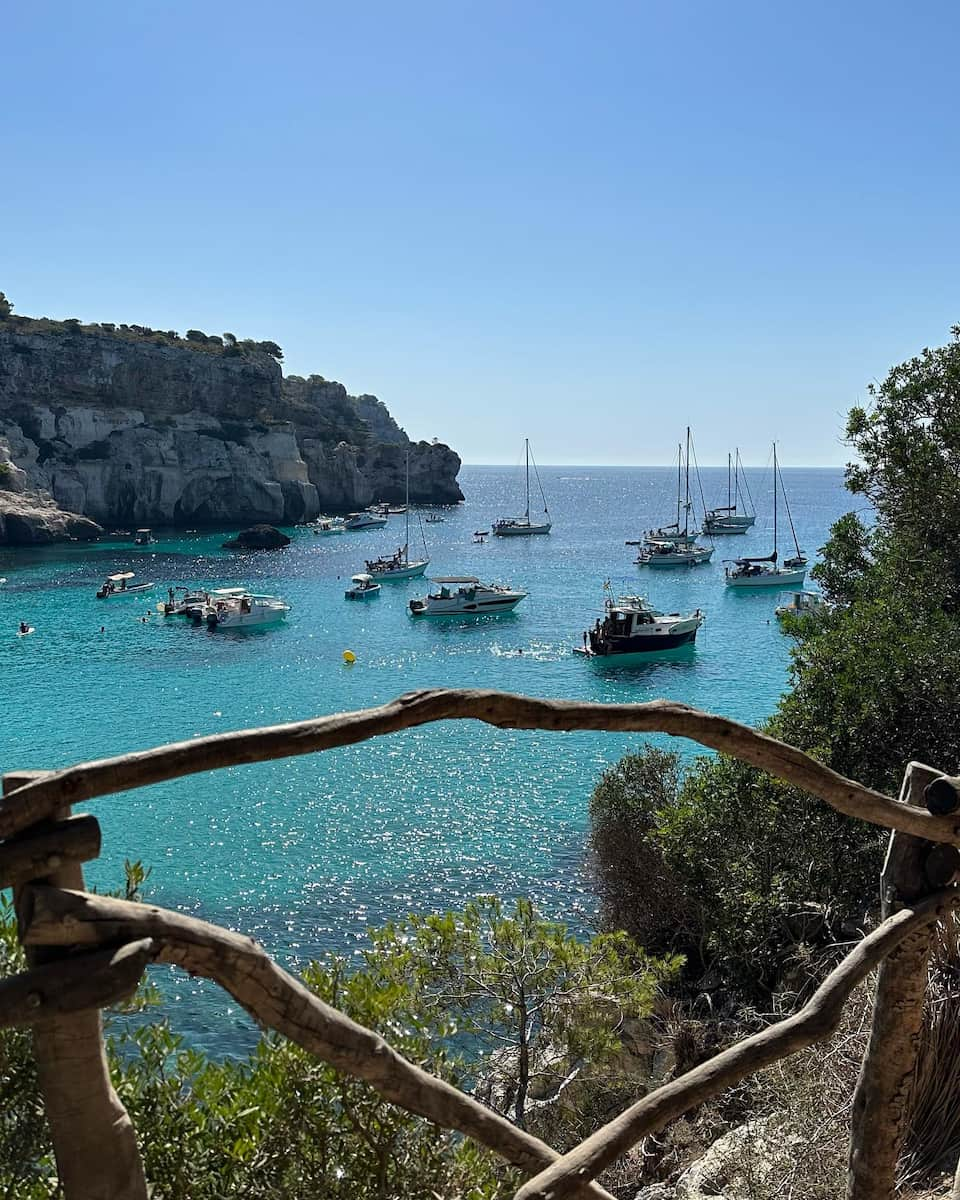
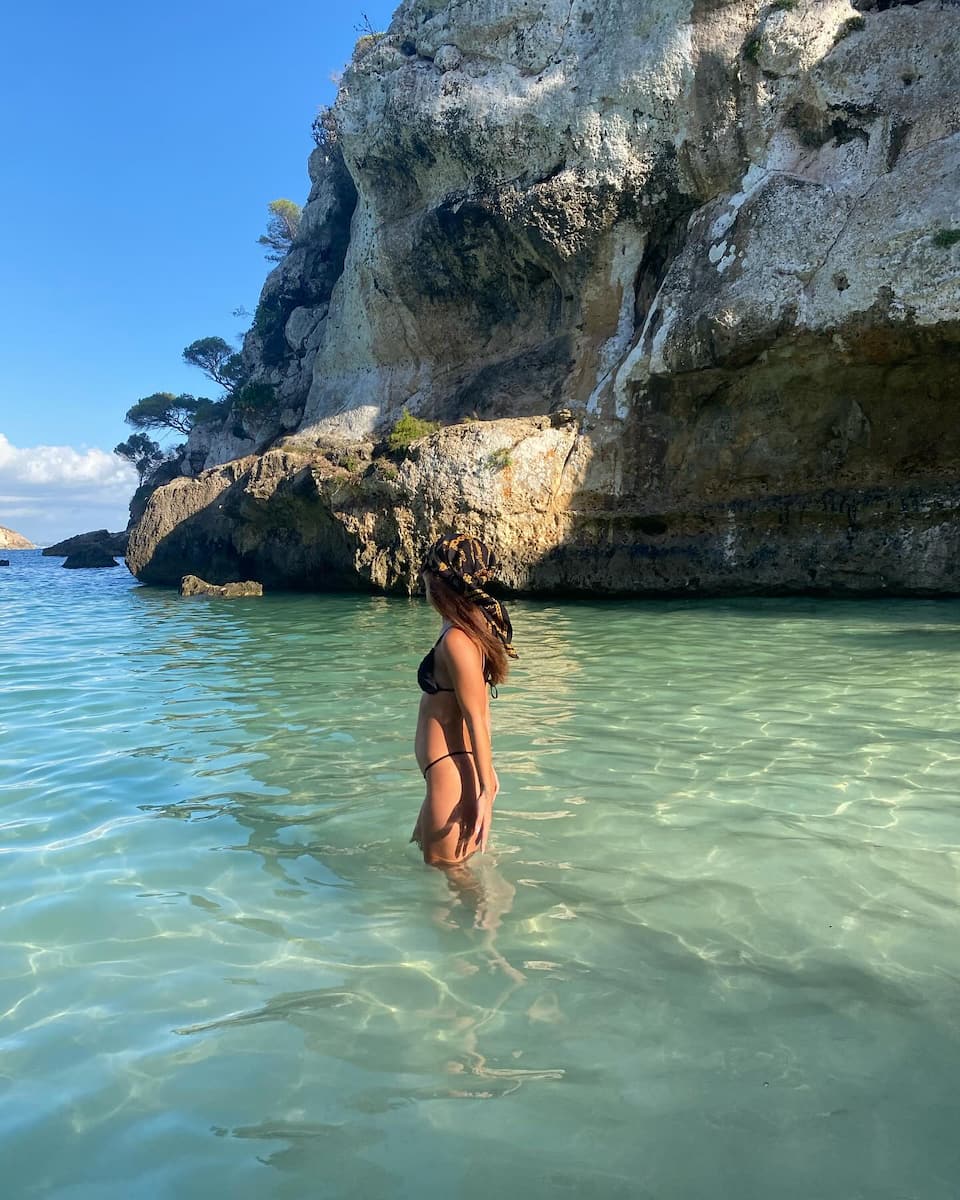
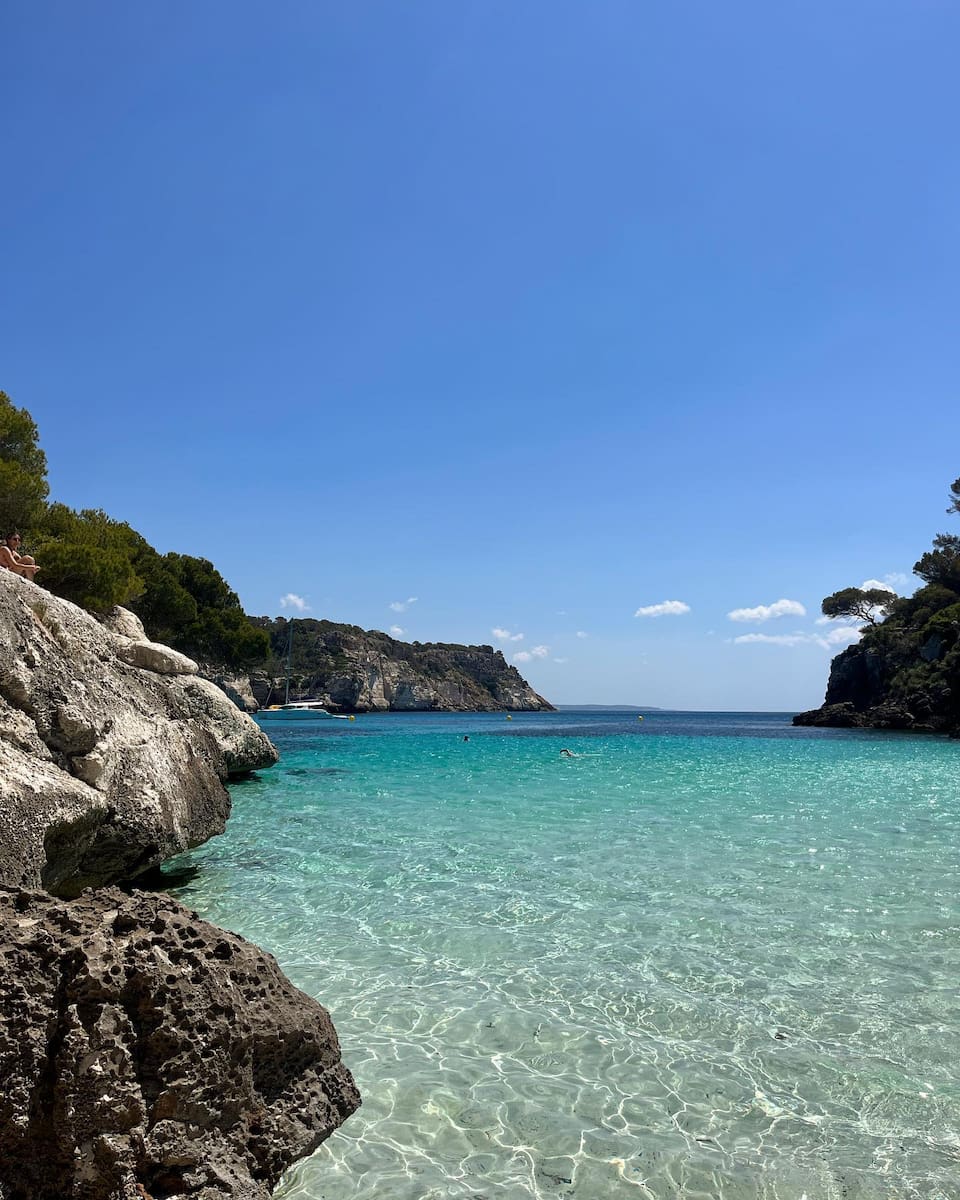
Beach Life: The limestone cliffs surrounding both beaches rise dramatically to heights of 50 meters, creating natural windbreaks and spectacular viewpoints. Marine life thrives in these crystal-clear waters, with schools of damselfish, wrasse, and occasional dolphins visible from the shore.
Insider Tip: Visit between 8-10 AM or after 4 PM during July and August to avoid the largest crowds and find easier parking in the 120-space lot.
⭐ Best tour
- Visit the 10 most beautiful beaches in Menorca By Boat – This boat tour offers a fantastic opportunity to explore some of Menorca’s most stunning beaches by boat. You’ll enjoy picturesque views, crystal-clear waters, and the chance to swim and relax at each location.
2. 🌿 S’Albufera des Grau Natural Park
Wildlife Haven: This 5,067-hectare natural park forms the core of Menorca’s UNESCO Biosphere Reserve, protecting five distinct ecosystems including wetlands, dunes, and Mediterranean woodland. The main lagoon spans 70 hectares and reaches depths of up to 3 meters, creating perfect conditions for over 90 species of birds. The park’s carefully maintained network of trails covers more than 50 kilometers, offering access to some of Menorca’s most pristine landscapes.
Outdoor Adventure: The park features three main hiking routes ranging from 2 to 8 kilometers, each offering unique perspectives on the local flora and fauna. Visitors can spot rare species like Hermann’s tortoises, Egyptian vultures, and endemic plants found nowhere else in the world. The visitor center provides interactive exhibits and detailed maps of the park’s 8,000-year human history and ecological significance.
Time Saver: Book the 3-hour guided tour that departs daily at 9 AM from the visitor center, covering all major highlights and including binocular rental for wildlife spotting.
⭐ Best tour
- Текст кнопки – Explore Menorca’s Albufera des Grau: hike sand dunes to wetlands, learn island’s geology, flora, fauna, and unwind on stunning white sand beaches.
3. 🏔️ Monte Toro
Island Views: At precisely 358 meters above sea level, Monte Toro offers views extending up to 30 kilometers on clear days, encompassing both the northern and southern coasts of Menorca. The summit’s strategic importance dates back to the 13th century when it served as a crucial defensive position. On exceptionally clear days, visitors can spot Mallorca’s mountains rising from the horizon approximately 40 kilometers away.
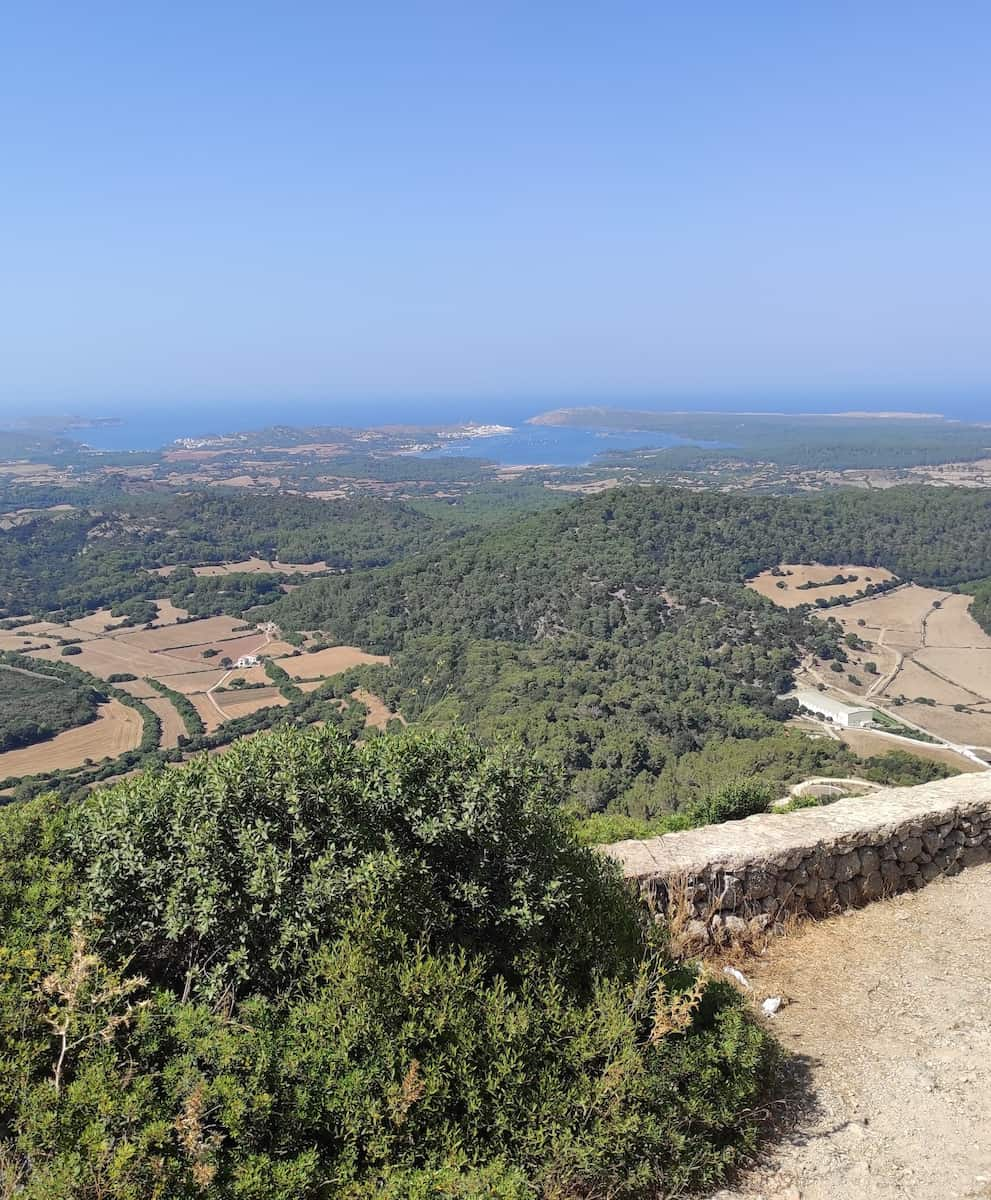
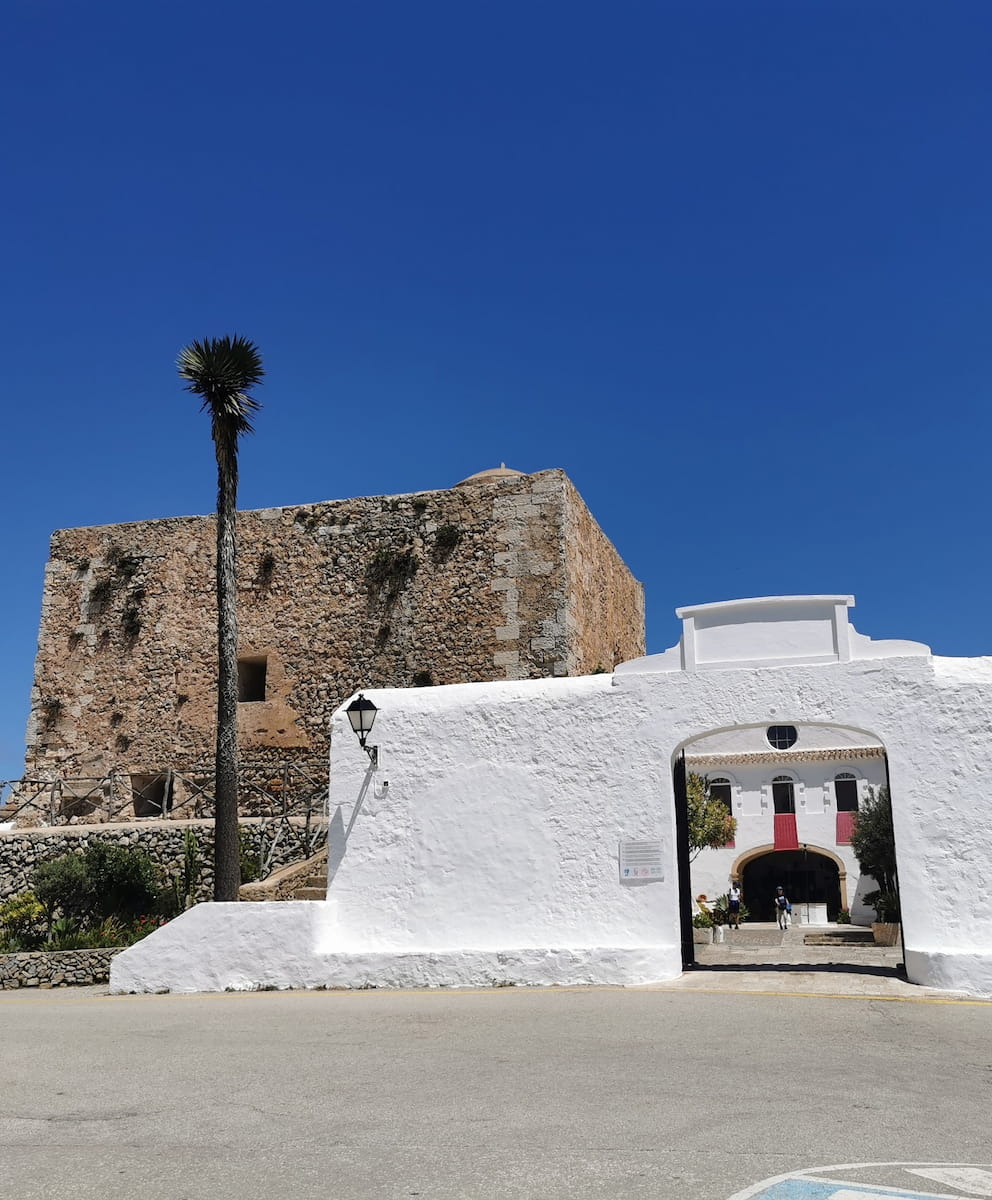
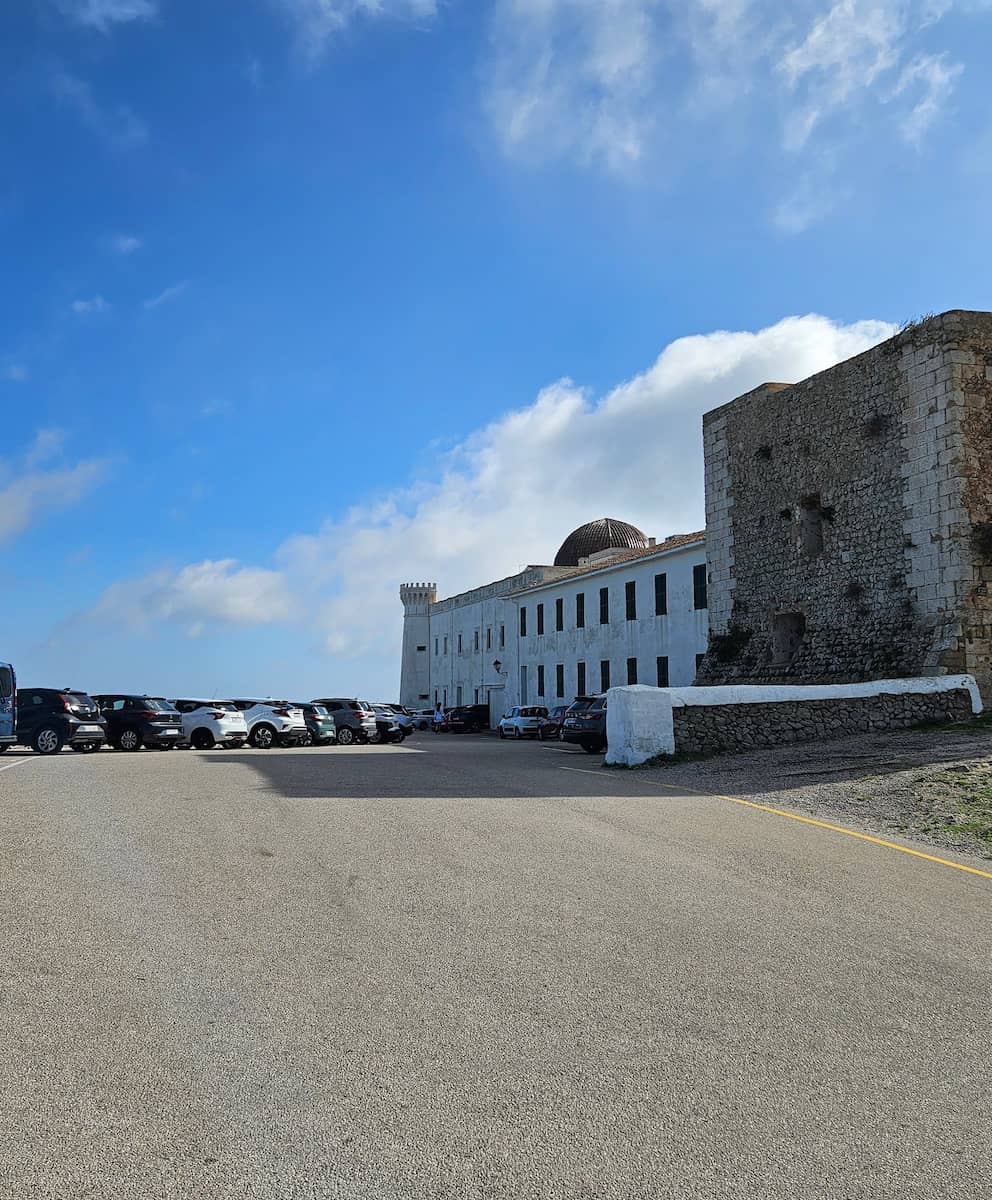
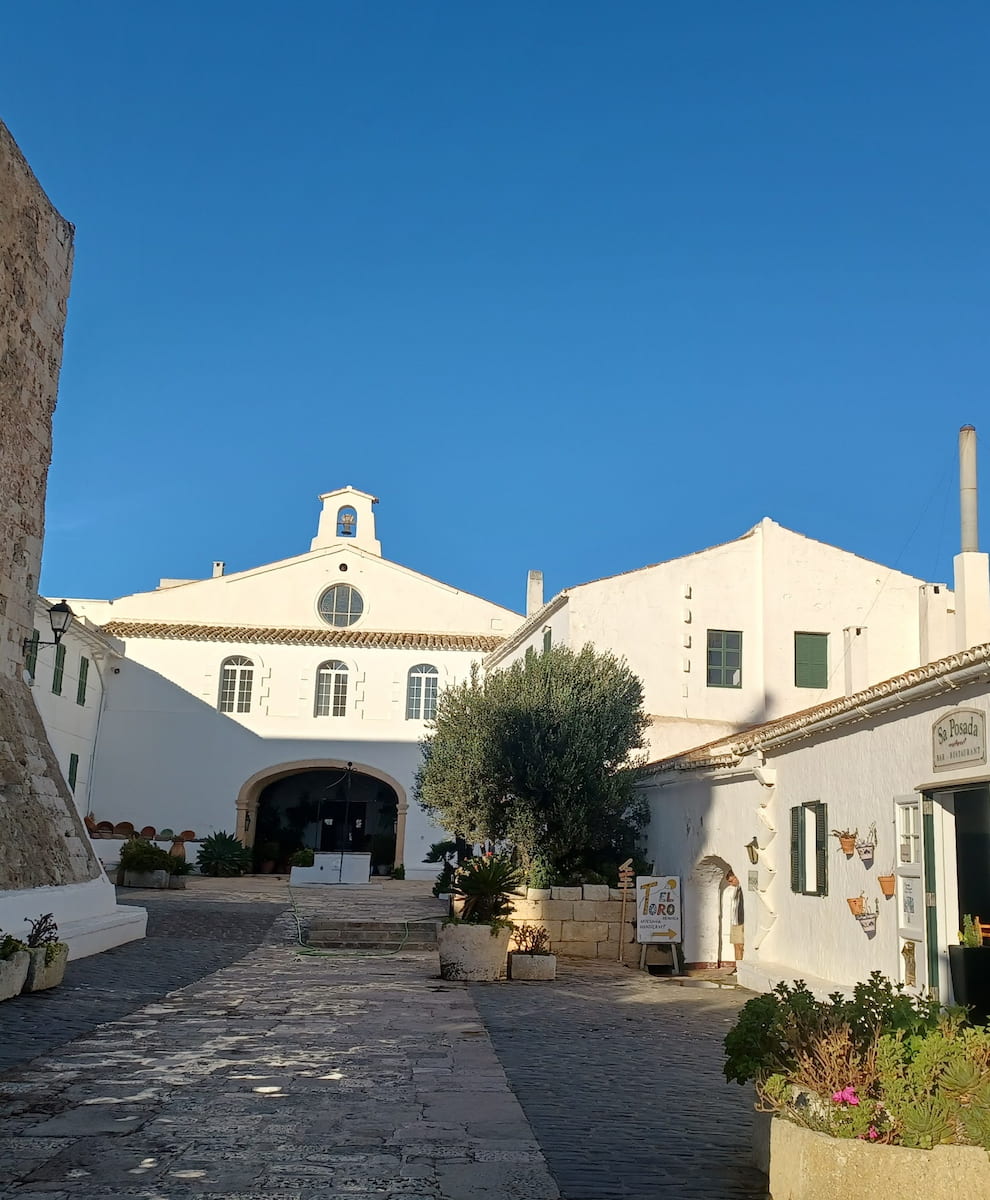
Cultural Heritage: The Sanctuary of the Mare de Déu del Toro, built in 1670, houses a revered 13th-century black Madonna statue and features unique architectural elements blending Gothic and Baroque styles. The site’s history includes serving as both a monastery and a military installation, with remnants of both visible today.
⭐ Best tour
- Half-Day Private Menorca Sightseeing Tour – See Cala’n Porter and its unspoilt sandy beach, and drive to the peak of Monte Toro for panoramic views of the whole island.
4. 🗿 Ancient Taulas
Prehistoric Wonder: The taulas, constructed between 850-550 BC, consist of two massive limestone blocks forming a T-shape, with the vertical stone weighing up to 8.5 tons and reaching heights of 3.7 meters. Archaeological studies have revealed that these monuments align with the Centaurus constellation and were likely used for both astronomical observations and religious ceremonies.
Historical Significance: Recent excavations have uncovered ritual deposits including burned animal bones, ceramic vessels, and bronze figurines dating from 550-123 BC at the base of several taulas. The monuments form part of 32 megalithic sites across Menorca, representing the highest concentration of prehistoric remains in the Mediterranean.
Money Saver: The “Menorca Megalítica” pass costs €15 and provides access to all major prehistoric sites, including Torre d’en Galmés, Torralba d’en Salort, and Trepucó, saving €12 compared to individual tickets.
5. 🏰 Torre d’en Galmés
Prehistoric City: Spanning an impressive 66,240 square meters (equivalent to 5 football fields), Torre d’en Galmés stands as the largest Talayotic settlement in the Balearic Islands. The site features three massive circular talayots, 27 domestic dwellings, and sophisticated water collection systems, supporting a population of up to 900 people during its peak.
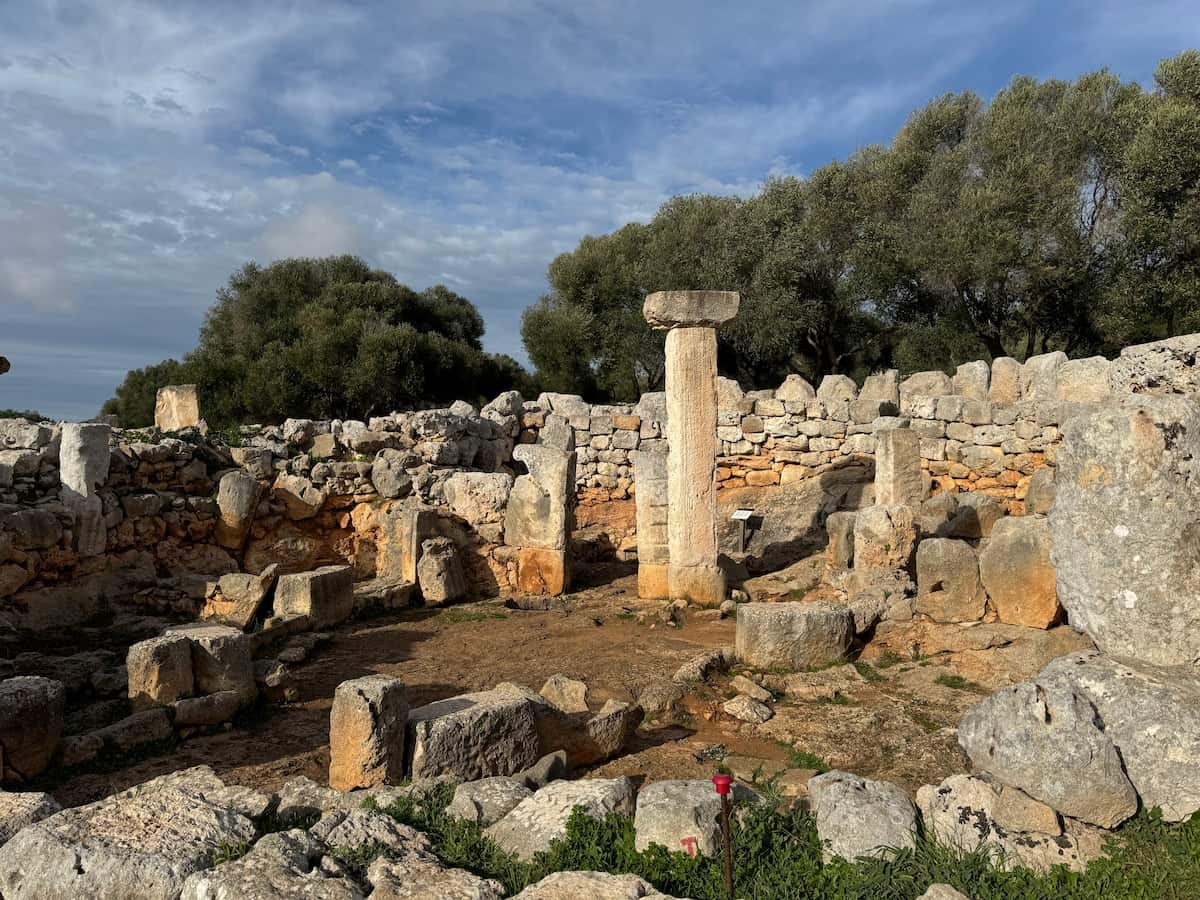
Archaeological Wonder: The settlement showcases remarkable architectural features including the Cartailhac Circle, a perfectly preserved Talayotic house with visible living spaces, courtyards, and hearths. The site’s strategic hilltop location offers stunning views across Menorca’s southern coast and, on clear days, even glimpses of Mallorca.
Insider Tip: Visit between 9 AM and noon for optimal lighting conditions and cooler temperatures. The €3 entrance fee includes access to the interpretation center, which provides valuable context for understanding the site’s historical significance.
6. 🌊 Cove S’Aigua
Natural Marvel: The cave system extends 200 meters into the limestone cliff, featuring an underground lake with a constant temperature of 18°C (64°F) and humidity levels of 95%. Geological studies date the cave formation to the Miocene period (23-5.3 million years ago), with stalactites and stalagmites growing at an average rate of 1 centimeter per century.
Historical Depths: Archaeological excavations have unearthed 127 pottery fragments from the Talayotic period (850-123 BC) and Roman amphorae dating from the 2nd century BC. The cave walls display 47 identified inscriptions in Latin, Arabic, and medieval Catalan, documenting its use as a freshwater source from the 10th to the 19th centuries. Marine fossils embedded in the cave walls provide evidence of sea level changes over the past 2.5 million years.
Top Tip: Book the first tour of the day at 10 AM when the cave’s humidity is lowest and visibility is best for photography; groups are limited to 12 people per guide to maintain optimal preservation conditions.
7. 🏛️ Naveta des Tudons
Ancient Marvel: The Naveta des Tudons stands as Europe’s oldest building, dating back to 1200 BC, measuring an impressive 14.5 meters long and 6.5 meters wide. This remarkable funerary monument was built using carefully arranged limestone blocks without mortar, showcasing the incredible engineering skills of prehistoric builders.
Archaeological Treasure: The monument served as a sophisticated two-level burial chamber, with the lower level used for storing disarticulated bones and the upper chamber designated for drying recently placed remains. During excavations in the 1960s, archaeologists discovered numerous artifacts including bronze bracelets, bone buttons, and ceramic pieces, now displayed in the Museum of Menorca.
Time Saver: Visit early morning or late afternoon for the best photography conditions and smaller crowds. Purchase tickets online to avoid queues during peak season.
⭐ Best tour
- Naveta d'Es Tudons: Tour – Visit one of the most outstanding monuments of Talaiotic culture.
8. 🏘️ Mahon Old Town
Historical Heart: The capital’s old quarter contains over 100 protected buildings spanning Georgian, Baroque, and Gothic architectural styles. The harbor, one of the largest natural ports in the Mediterranean, stretches 5 kilometers inland and reaches depths of up to 30 meters. The historic center features a network of pedestrian streets covering approximately 4 square kilometers, with buildings dating from the 14th to 19th centuries.
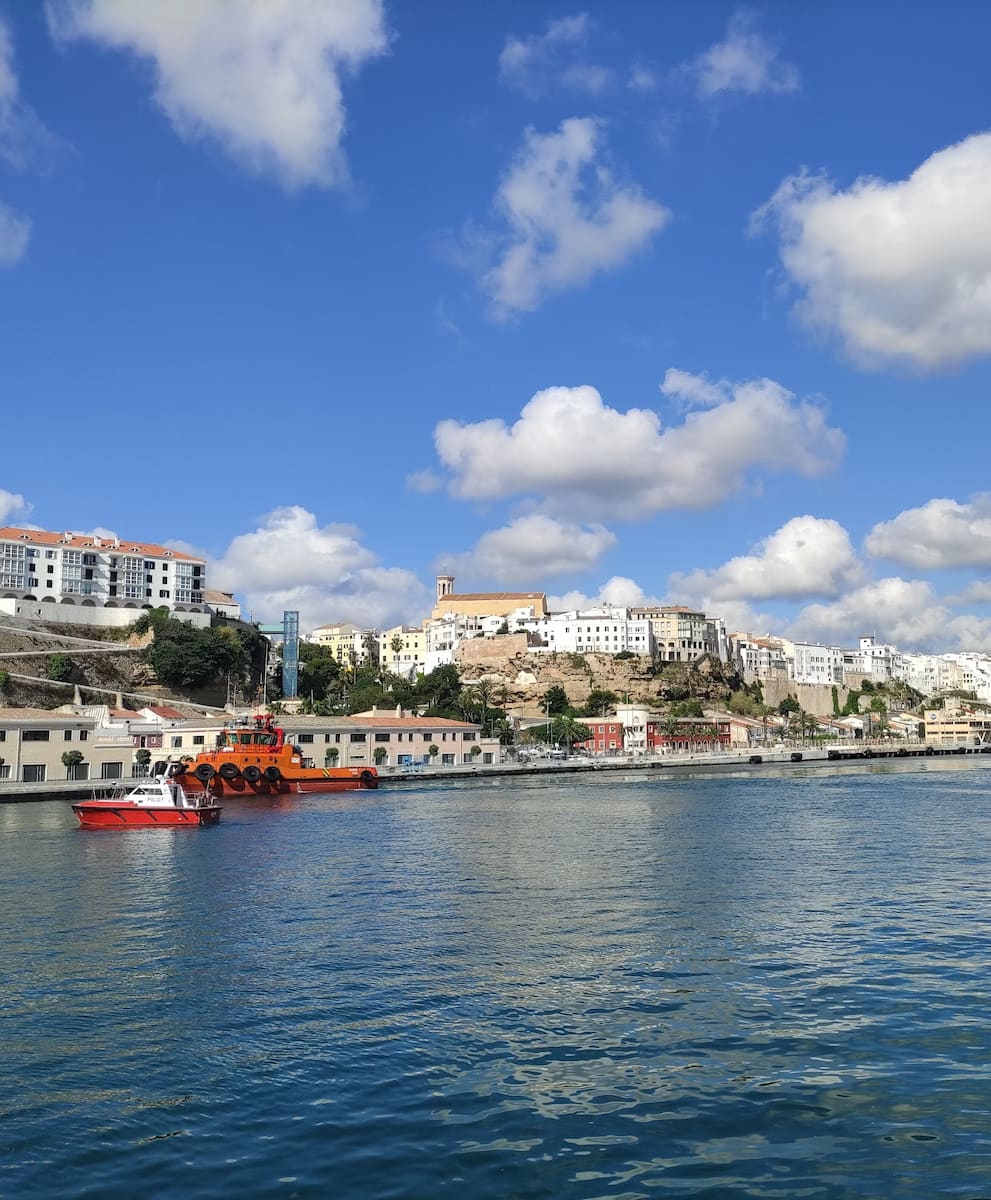
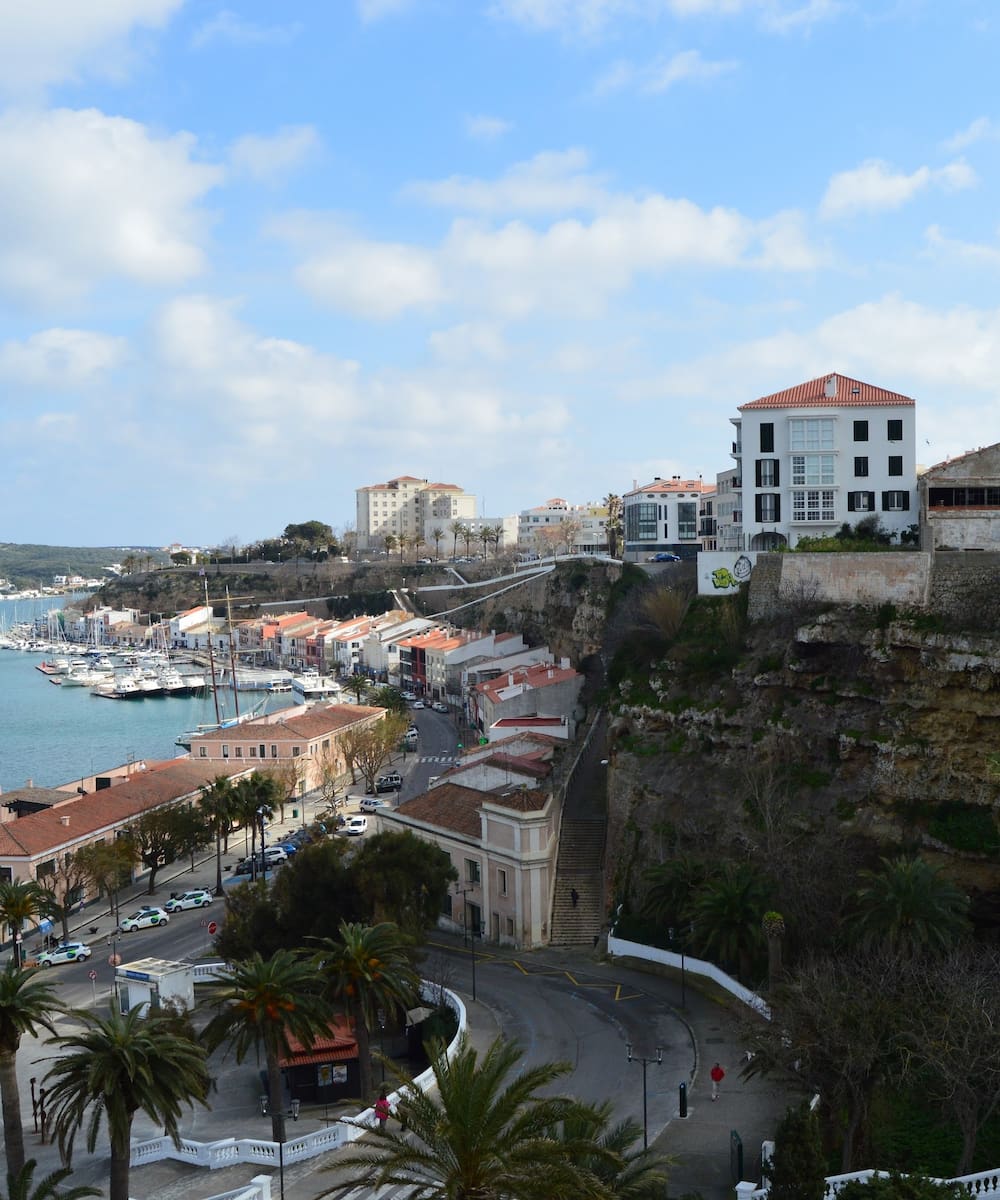
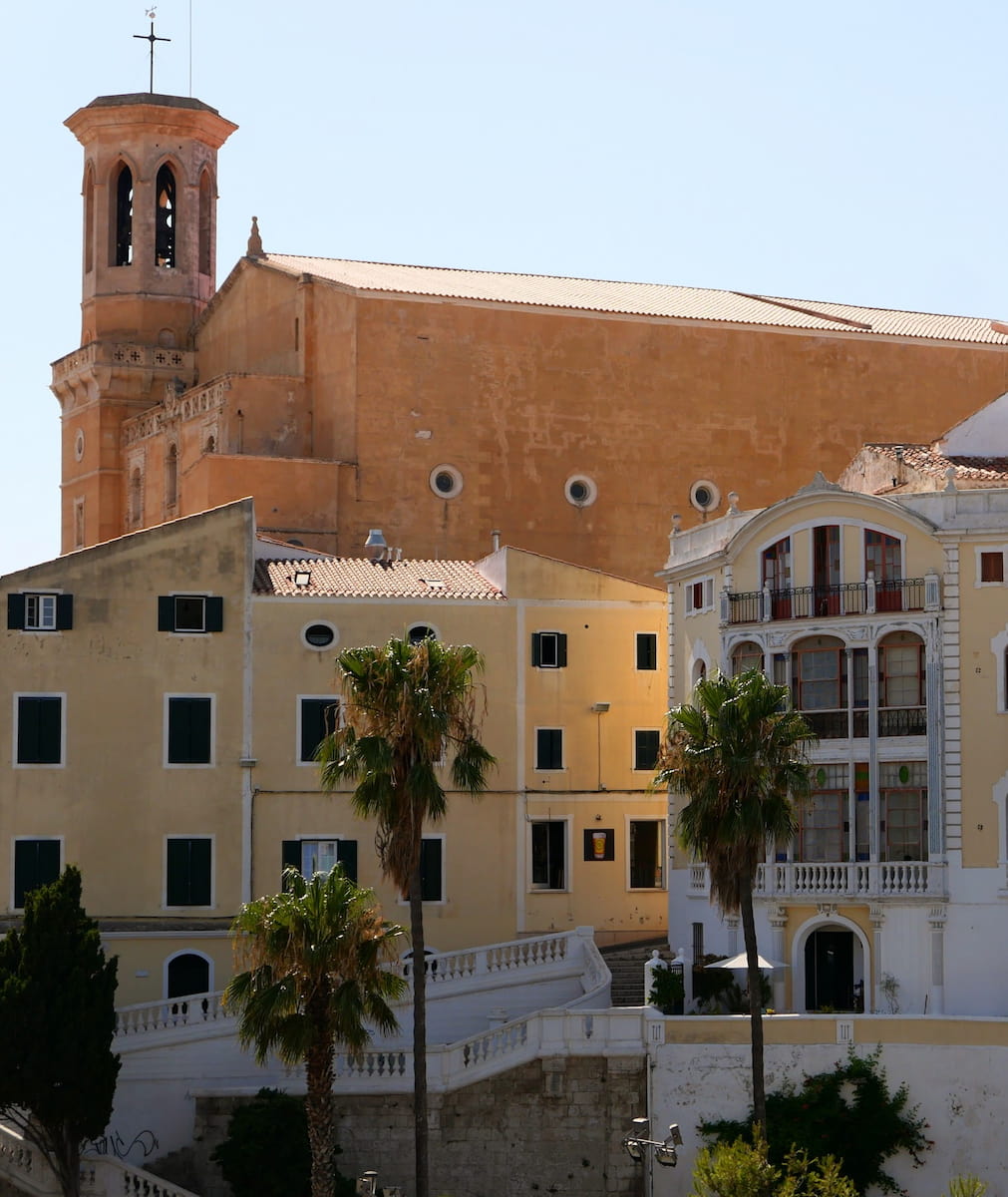
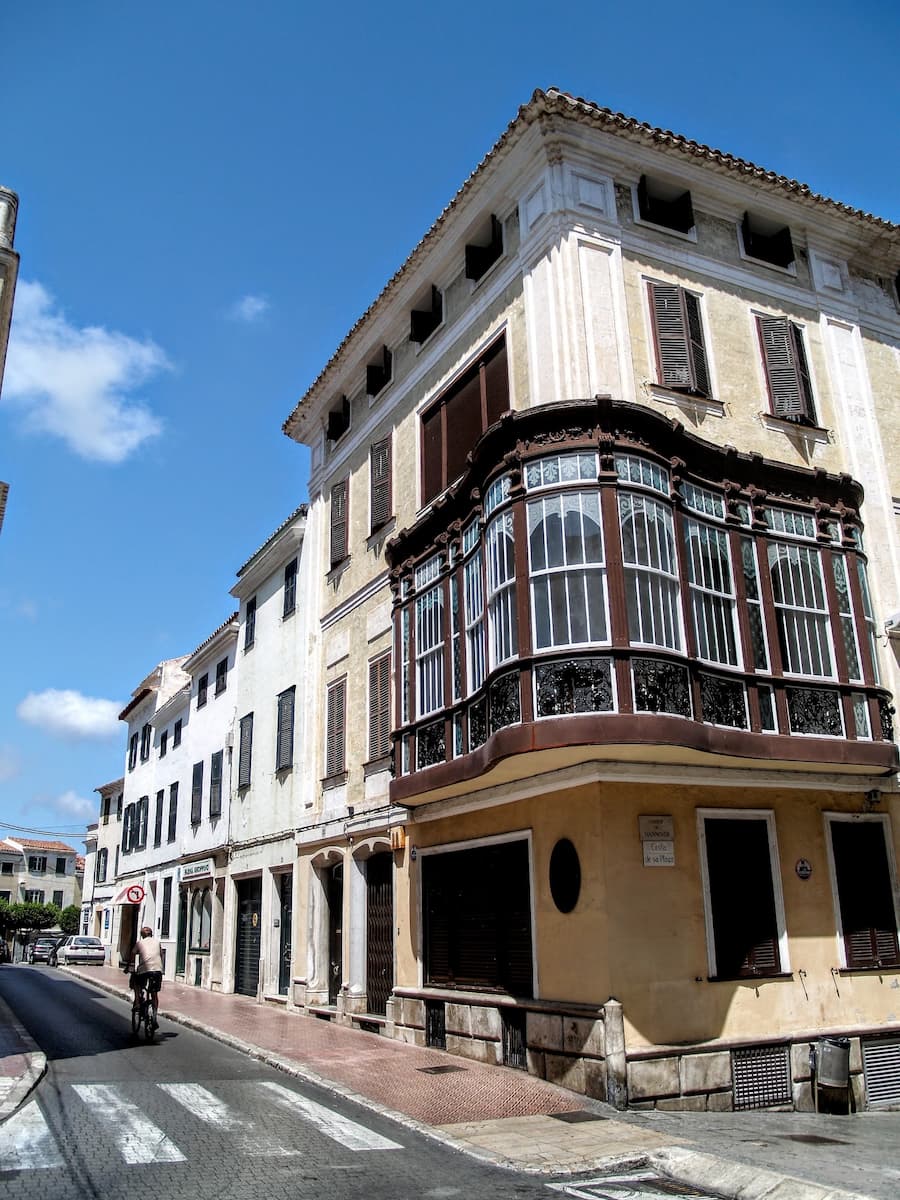
Cultural Heritage: The Church of Santa Maria, built in 1748, houses one of the largest pipe organs in Europe with 3,006 pipes and four keyboards. The traditional market, operating since 1927, hosts 17 permanent stalls selling local produce and the famous Mahón cheese.
Top Tip: Take the free walking tour that departs from Plaza de s’Esplanada at 10 AM daily (April-October) to learn about the city’s 2,000-year history.
⭐ Best tour
- MAHON AND SURROUNDINGS – This tour provides an immersive experience of Mahón, the capital of Menorca, and its surrounding areas. Discover the rich history, stunning architecture, and vibrant local culture as you explore this beautiful region.
9. 🚢 Discovery Tour of South Coast
Coastal Journey: The Boat Tour explores Menorca’s stunning southern coastline for 3.5 hours, visiting pristine beaches including Son Saura, Cala Turqueta, and the famous twin coves of Macarella and Macarelleta. The journey includes exploration of dramatic limestone cliffs, hidden caves, and opportunities to spot Mediterranean marine life.
Tour Features: The experience includes professional guides providing commentary about the island’s history and ecology. Comfortable boats are equipped with stern platform ladders for easy water access, snorkeling gear, and stand-up paddleboards.
Insider Tips: Choose seats on the starboard side for the best views of the beaches and caves. Bring underwater cameras and reef-safe sunscreen for the best experience while protecting the marine environment.
⭐ Best tour
- Discovery Tour – This half-day boat tour takes you along the stunning south coast of Menorca, showcasing its picturesque coves and crystal-clear waters. Enjoy swimming, sunbathing, and exploring hidden gems while soaking in the breathtaking views of the island’s natural beauty.
Things to Do in Menorca with Kids
1. 🌊 Aqua Center Adventures
Splash Paradise: The water park spans an impressive 20,000 square meters and features 8 different slides ranging from gentle slopes to adrenaline-pumping vertical drops. The dedicated children’s area includes a 500-square-meter shallow pool with interactive water features and mini slides designed for toddlers.
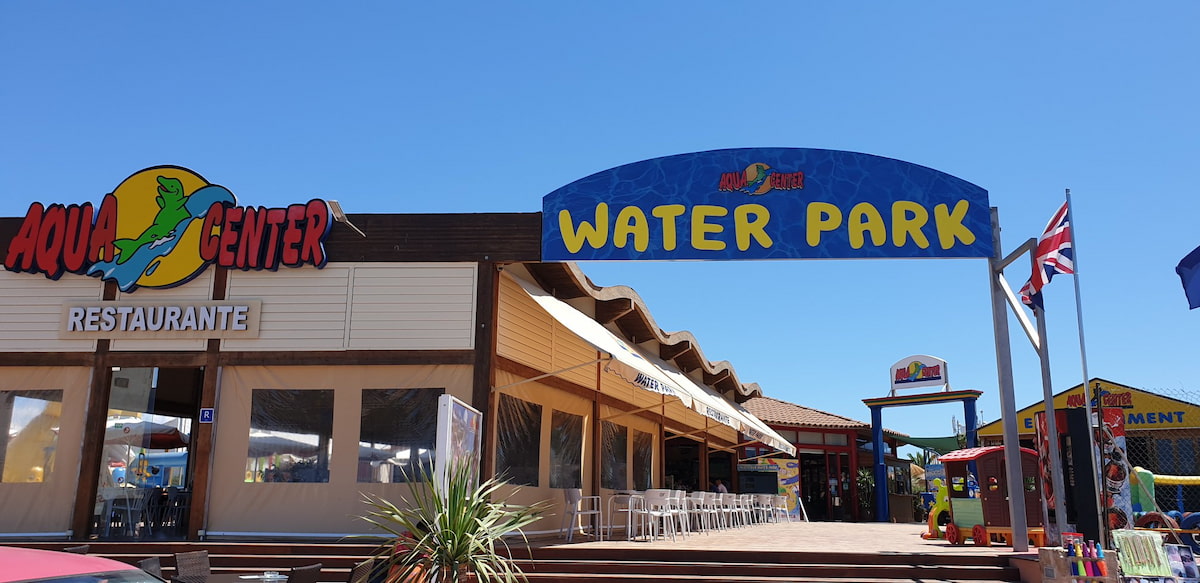
Family Fun: Beyond water attractions, the center offers a 600-meter go-kart track with vehicles suitable for different age groups and skill levels. The facility includes 4 restaurants and snack bars serving kid-friendly meals, plus shaded picnic areas for families bringing their own food.
Time Saver: Purchase tickets online to save 15% and skip the entrance queue; arrive at 10 AM opening time to claim the best spots by the pools.
2. 🦁 Lloc de Menorca Zoo
Animal Kingdom: Housing over 100 species across 10 hectares, the zoo specializes in conservation of endangered Mediterranean species and exotic primates. The lemur walkthrough habitat spans 400 square meters, allowing visitors to interact with these fascinating creatures in a controlled environment. The primate section features five different species of monkeys in naturalistic enclosures designed to mimic their native habitats.
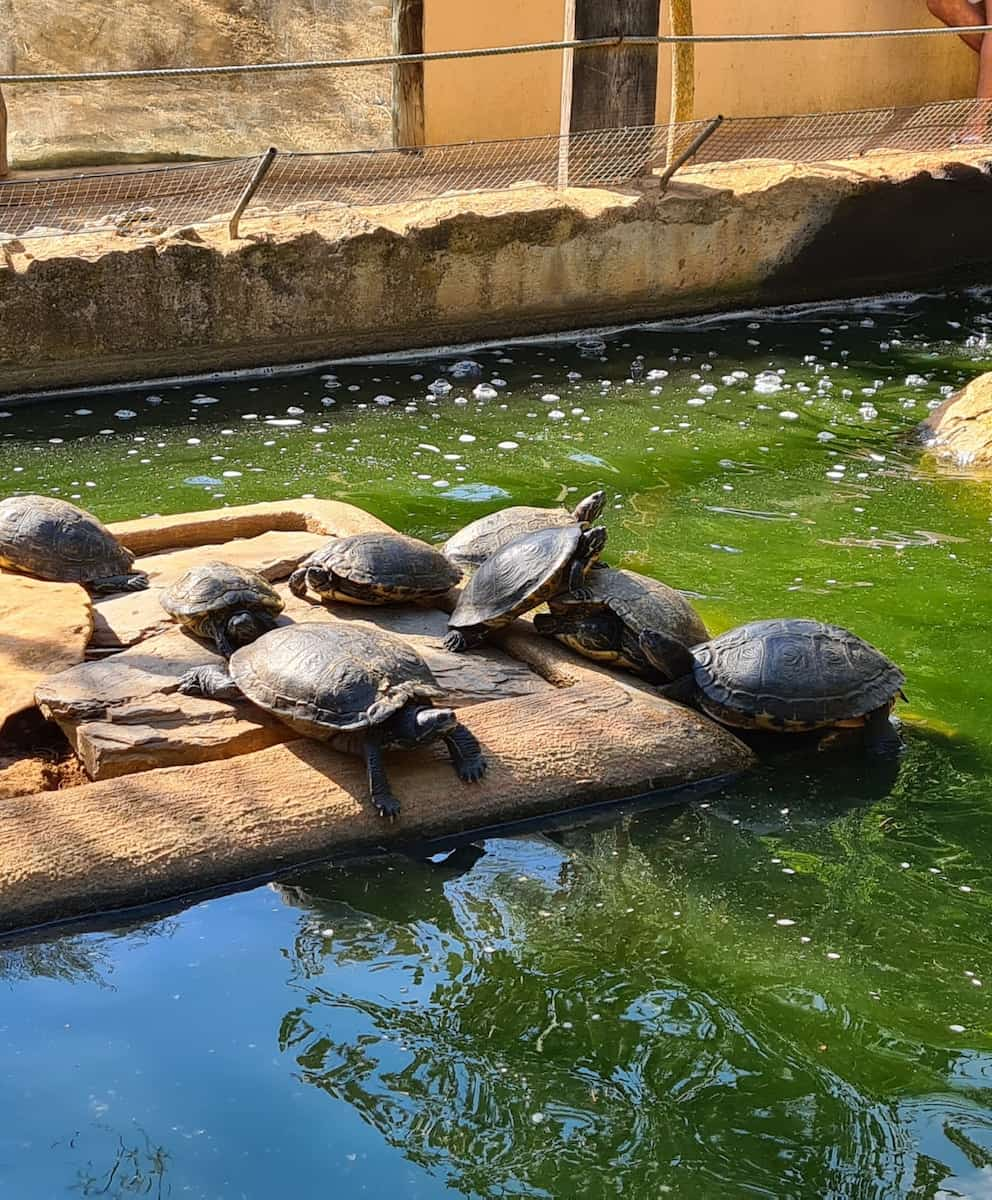
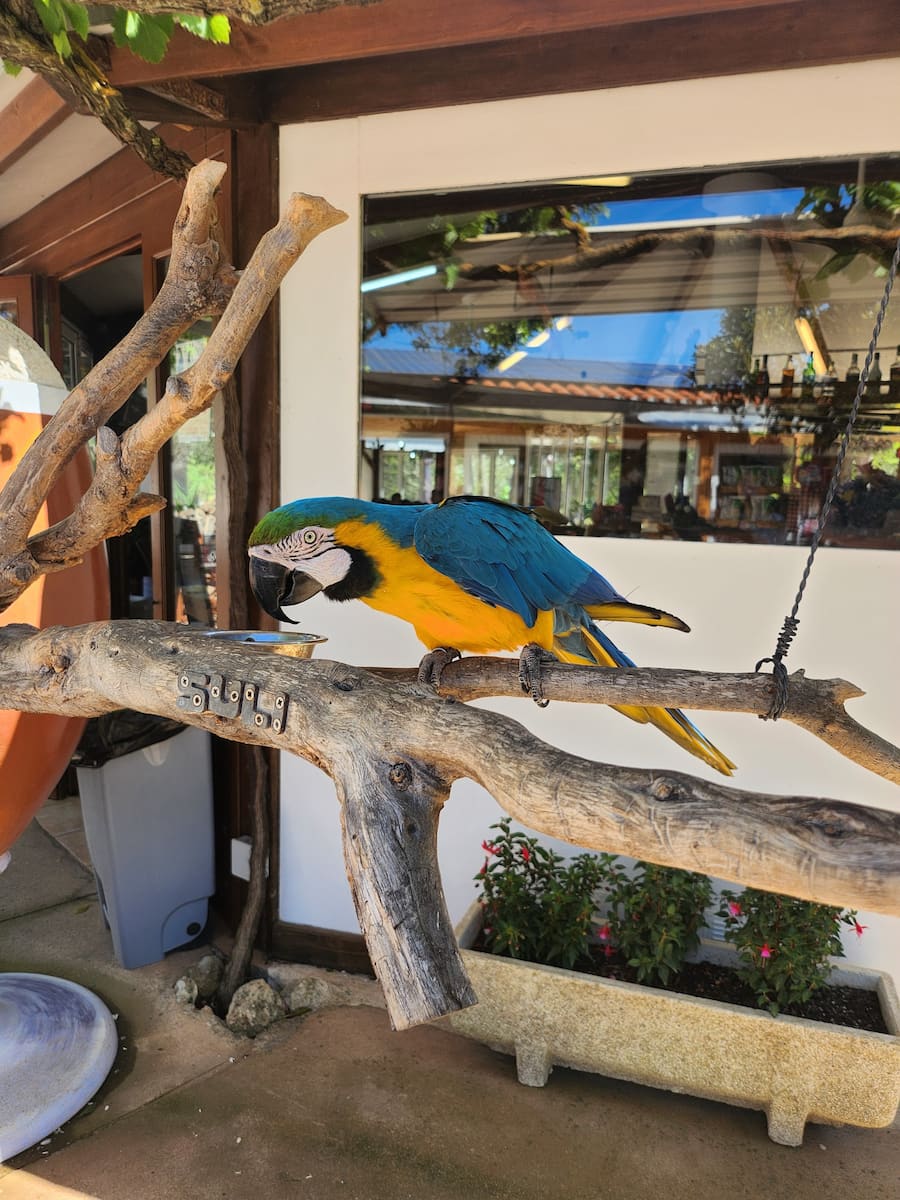
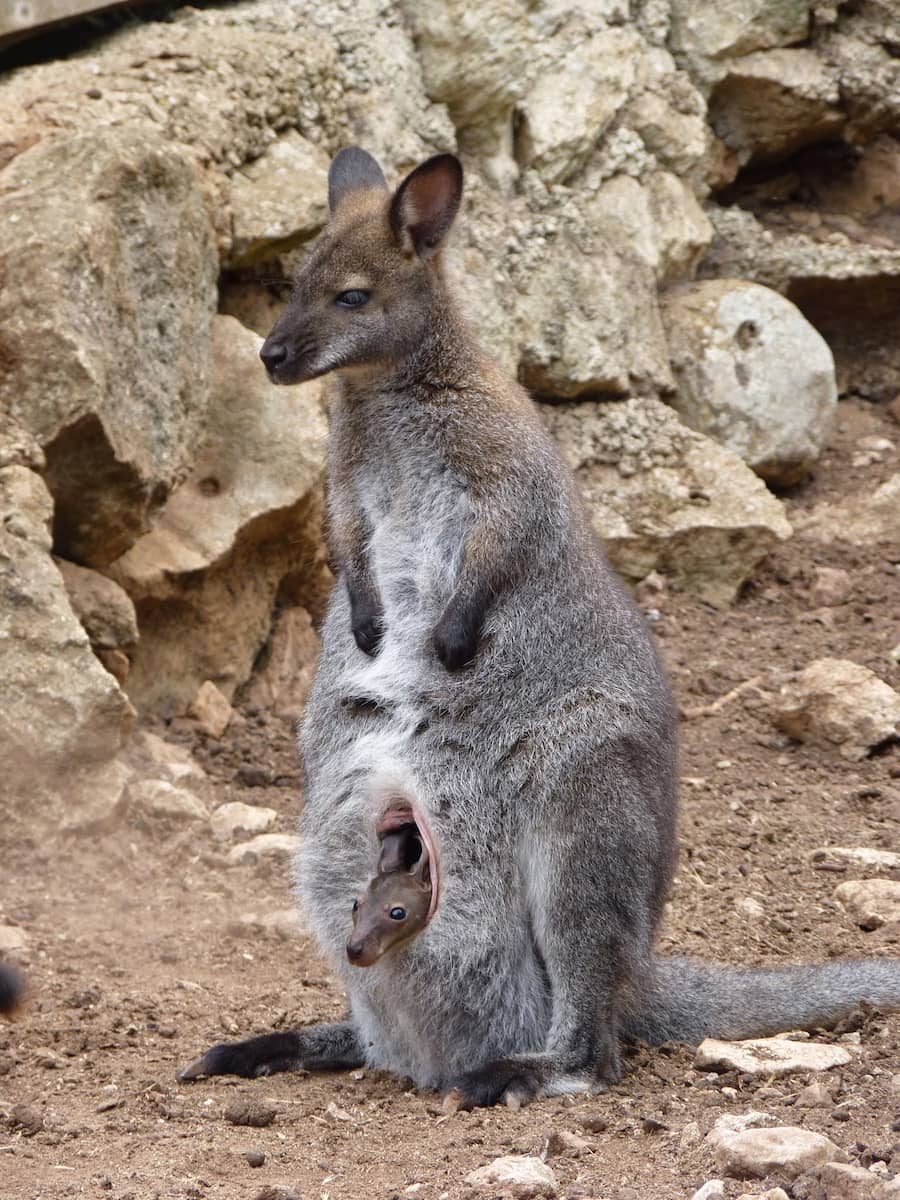

Educational Experience: Daily keeper talks occur at six different locations throughout the zoo, covering topics from animal behavior to conservation efforts. The zoo’s breeding program has successfully produced over 30 endangered species offspring in the past decade. Interactive workshops allow children to learn about animal care, including supervised feeding sessions with friendly farm animals.
Insider Tip: Visit during the 11 AM and 3 PM feeding times for the best animal activity, and don’t miss the new nocturnal animals exhibit in the air-conditioned building.
Free Things to Do in Menorca
1. 🥾 Hike the Camí de Cavalls
Historic Path: This ancient coastal path circles the entire island for 185 kilometers, divided into 20 well-marked stages ranging from 5 to 14 kilometers each. The trail dates back to the 14th century when it was used by military forces to defend the island’s coastline. Modern restoration work completed in 2010 has made the path accessible to hikers, cyclists, and horse riders while preserving its historical character.
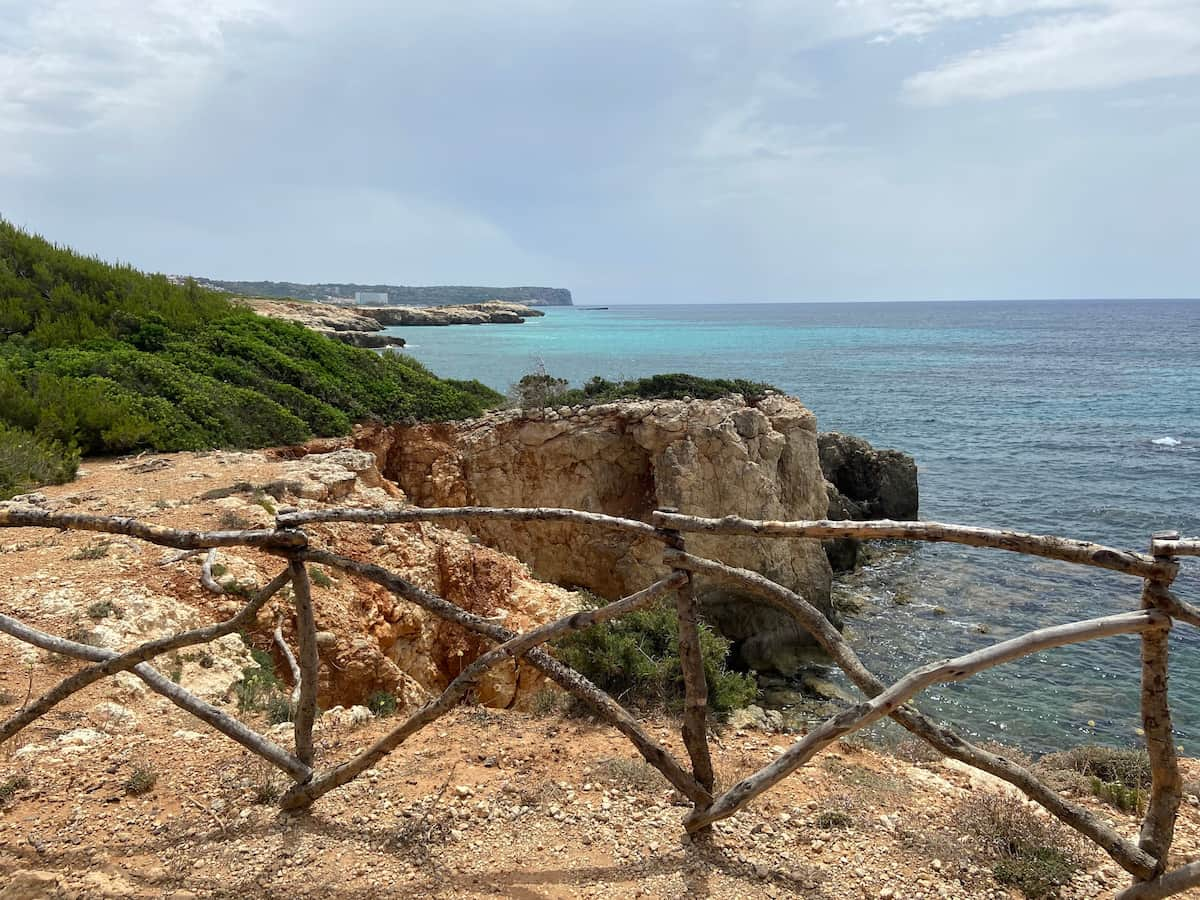
Natural Wonders: The path provides access to over 50 beaches and coves, many only reachable on foot, and passes through diverse ecosystems including wetlands, cliffs, and Mediterranean forests. Hikers can observe more than 200 species of birds and 1,000 plant species, with 60 being endemic to the Balearic Islands. The trail offers spectacular views of the island’s 43 lighthouses and numerous defensive towers.
Money Saver: Download the free official Camí de Cavalls 360º app for detailed maps, GPS tracking, and points of interest along the route.
2. 📜 Explore Historic Ciutadella
Ancient Capital: The former capital of Menorca showcases stunning architecture with its Renaissance-style Cathedral, historic mansions, and medieval streets. The Port of Ciutadella features a natural harbor stretching 5 kilometers inland with depths reaching 30 meters. The old quarter contains over 100 protected buildings spanning Georgian, Baroque, and Gothic architectural styles.
Cultural Heritage: The town comes alive during the Sant Joan Festival, featuring traditional horse shows and noble family celebrations. The historic fish market, with its distinctive green and white tiles, offers authentic local cuisine experiences.
Time Saver: Visit the port area after 4 PM when the lighting is perfect for photos and restaurant terraces are less crowded.
3. 🏰 Discover Es Mercadal
Mountain Town: Situated exactly 21 kilometers from both Mahón and Ciutadella, Es Mercadal serves as the geographical heart of Menorca at an elevation of 47 meters above sea level. The town’s distinctive architecture features 375 traditional whitewashed houses with unique black limestone windowsills, a characteristic style dating back to the 14th century.
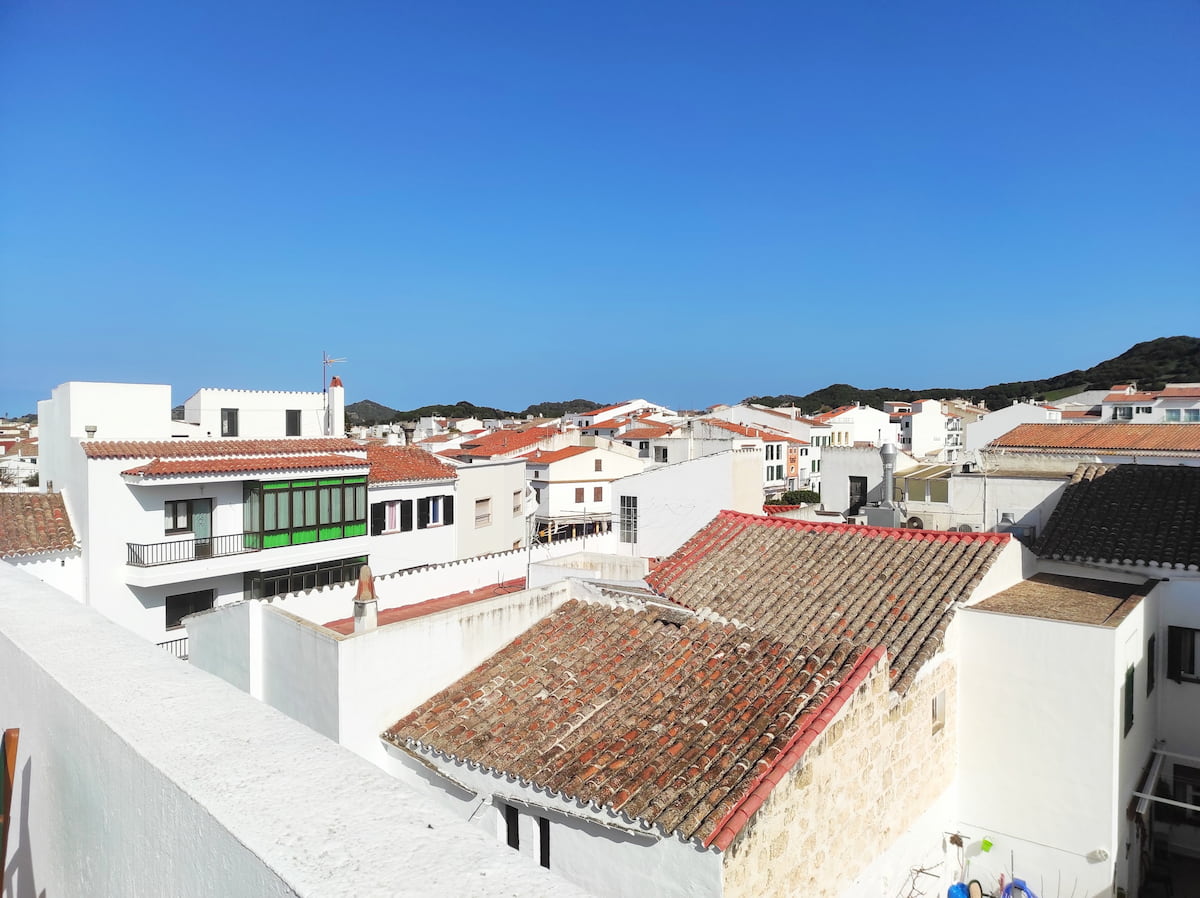
Local Flavors: Es Mercadal is home to 12 traditional bakeries producing “amargos” (almond macaroons) and “carquinyols” (local biscuits) using recipes dating back to the 17th century. The town hosts Menorca’s largest agricultural fair each third Sunday of July, attracting over 15,000 visitors to sample products from 85 local producers.
Insider Tip: Visit during the Tuesday morning market (7 AM – 2 PM) when local farmers bring their produce directly from 25 surrounding farms, offering prices 30% lower than supermarkets.
Day Trips in Menorca
1. 🏝️ Illa del Rei
Historical Significance: This 41,177-square-meter harbor island houses a British naval hospital from 1711, featuring 13 perfectly preserved ward rooms and an original surgical theater. Recent renovations have added 1,500 square meters of contemporary art space, including installations by international artists. The island also contains archaeological remains of a 6th-century Byzantine basilica covering 275 square meters.
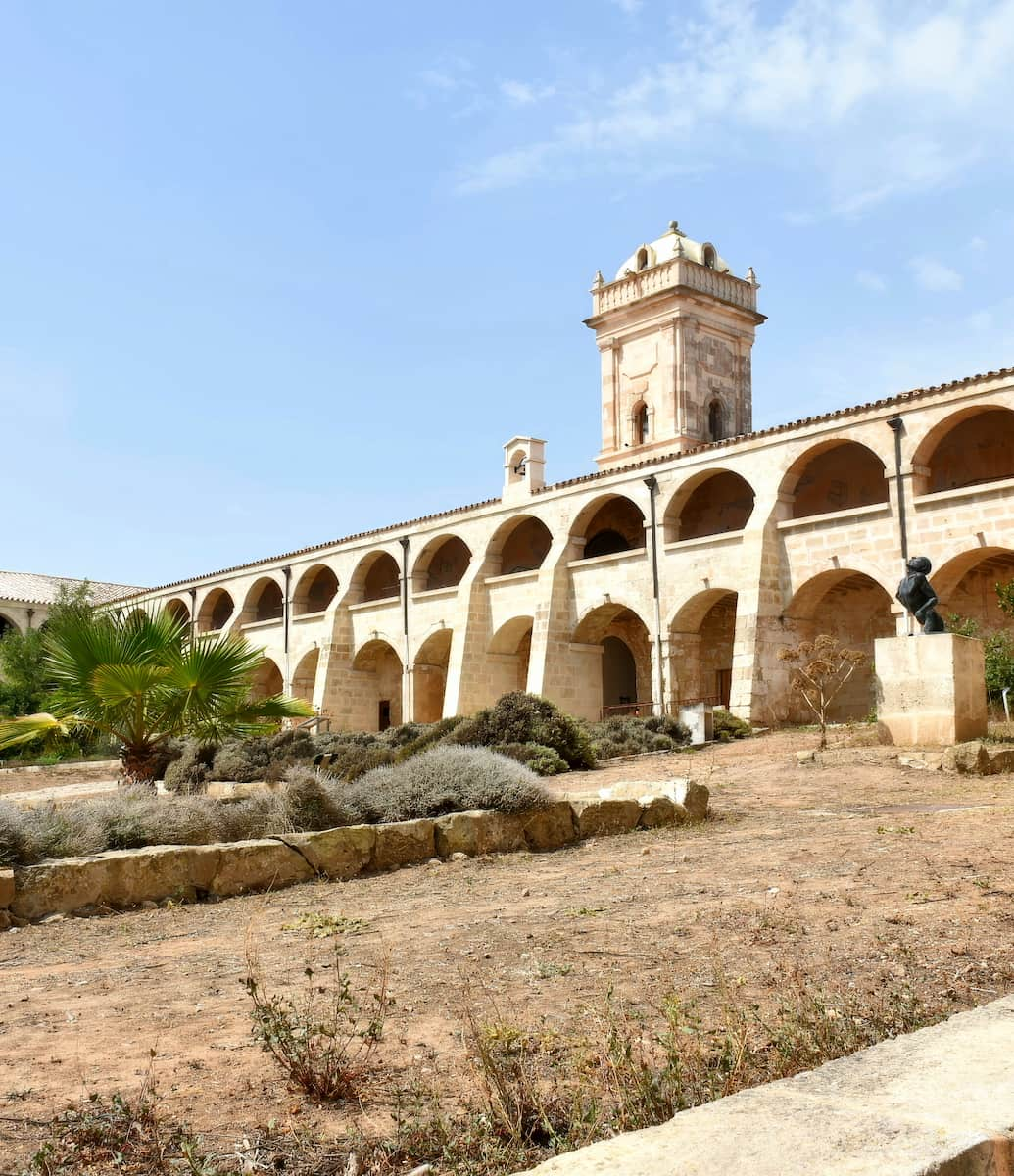
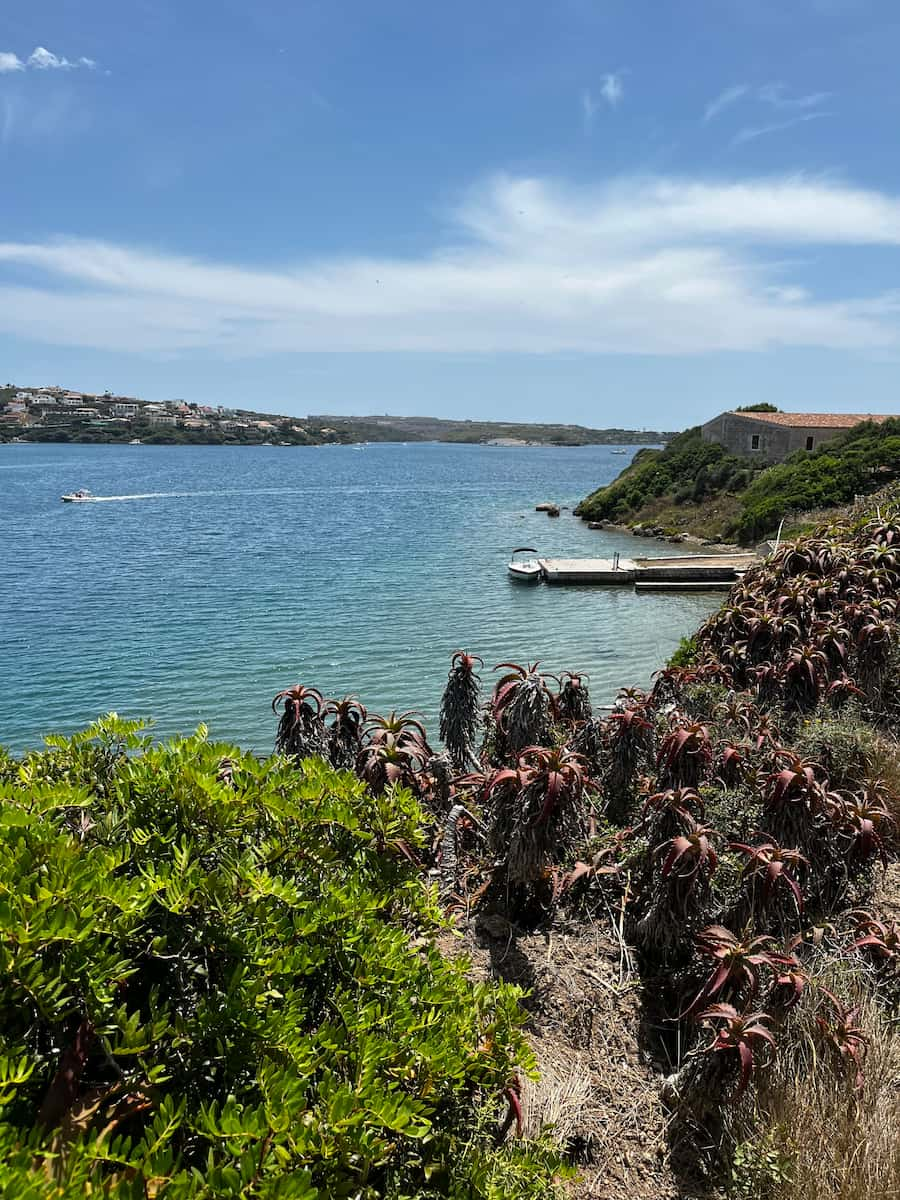
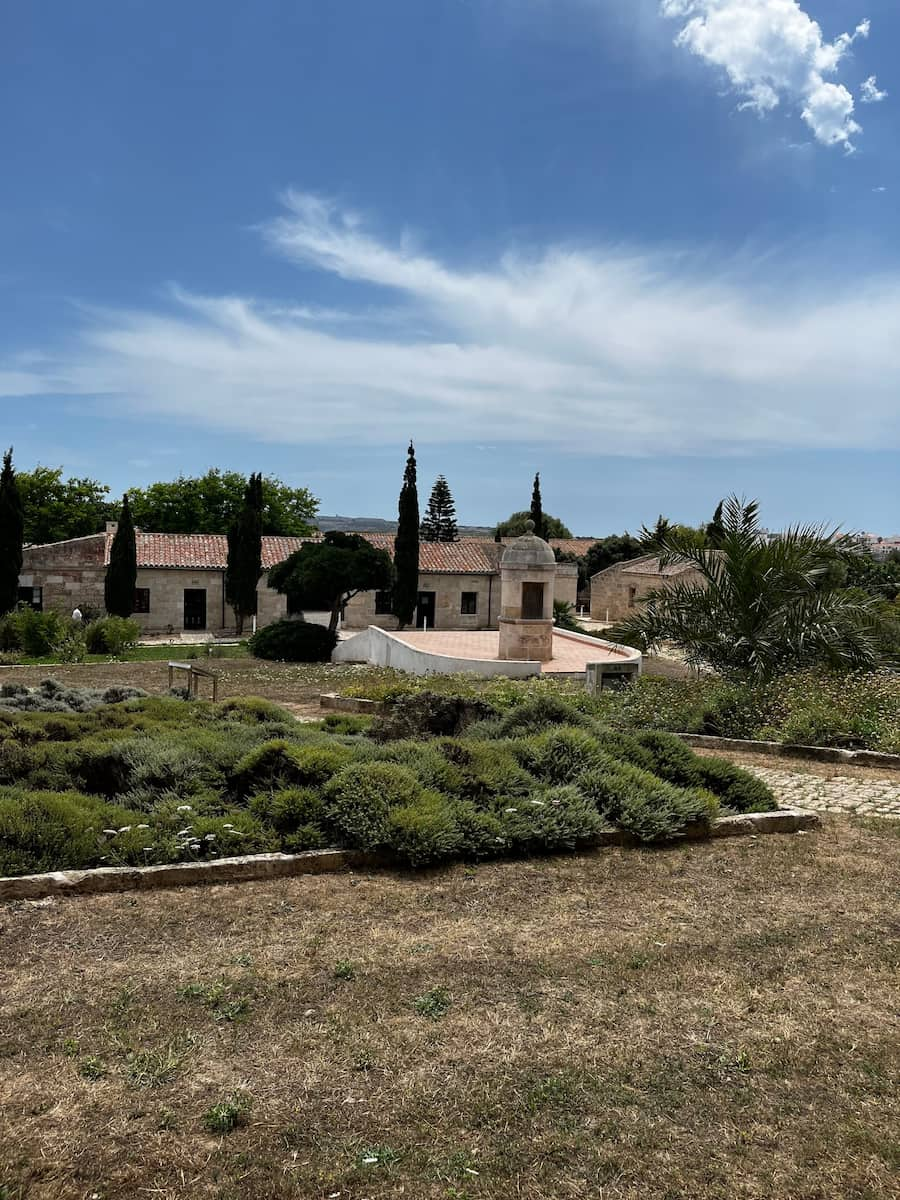
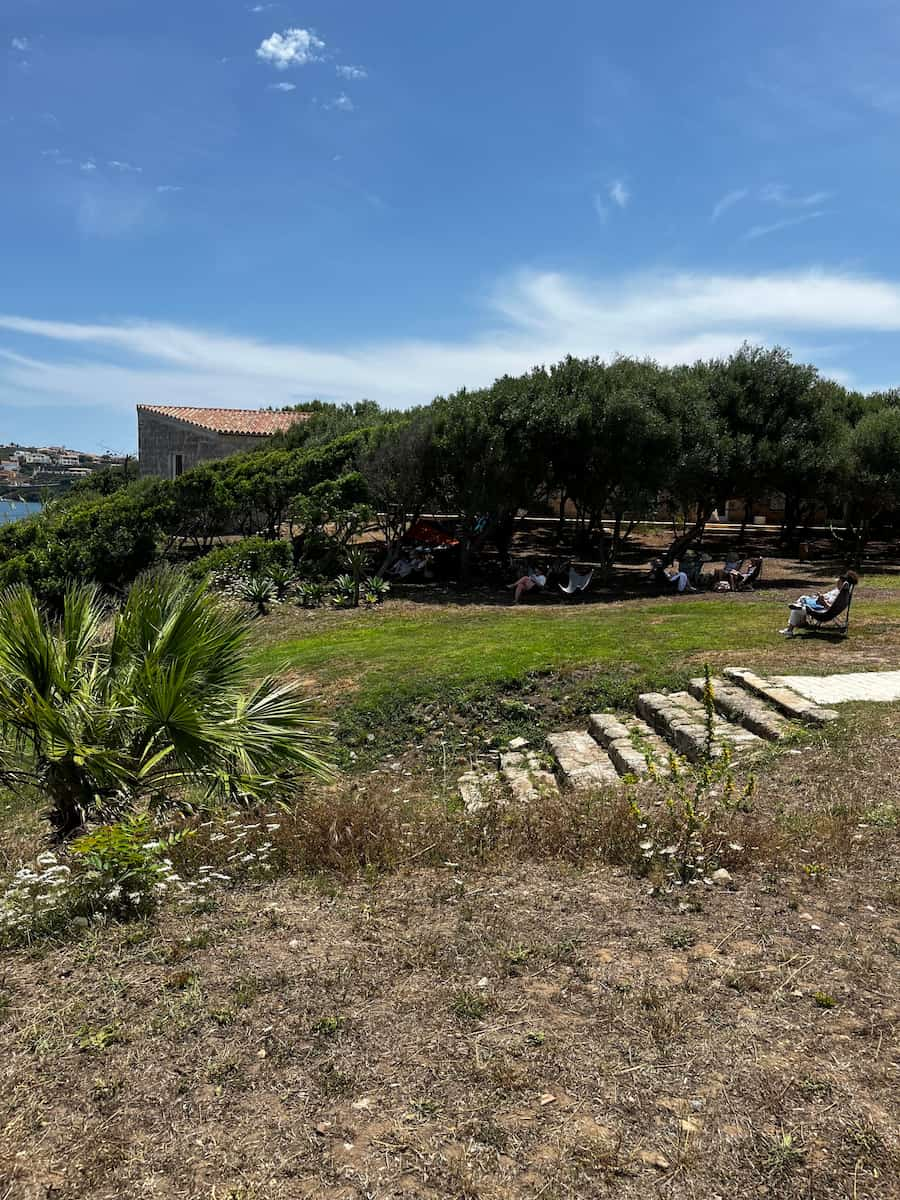
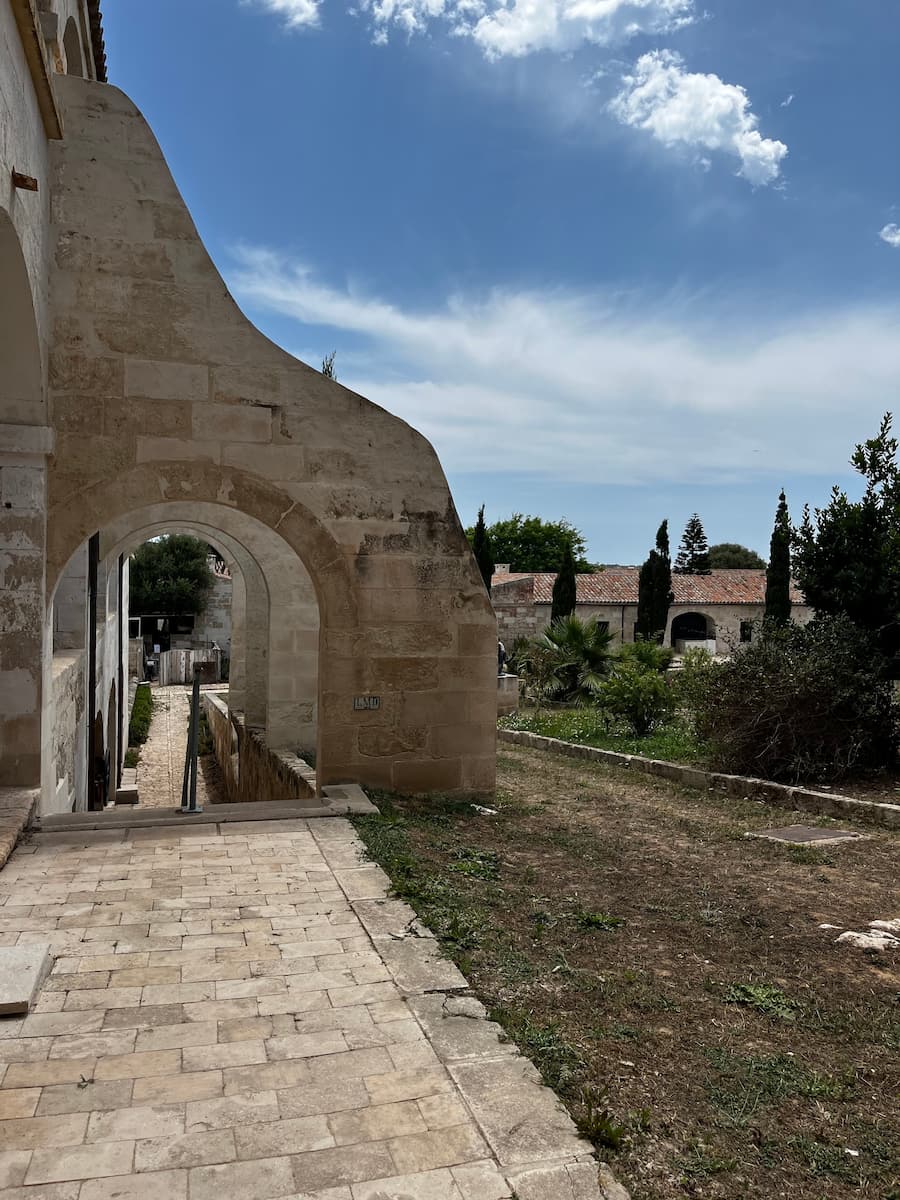
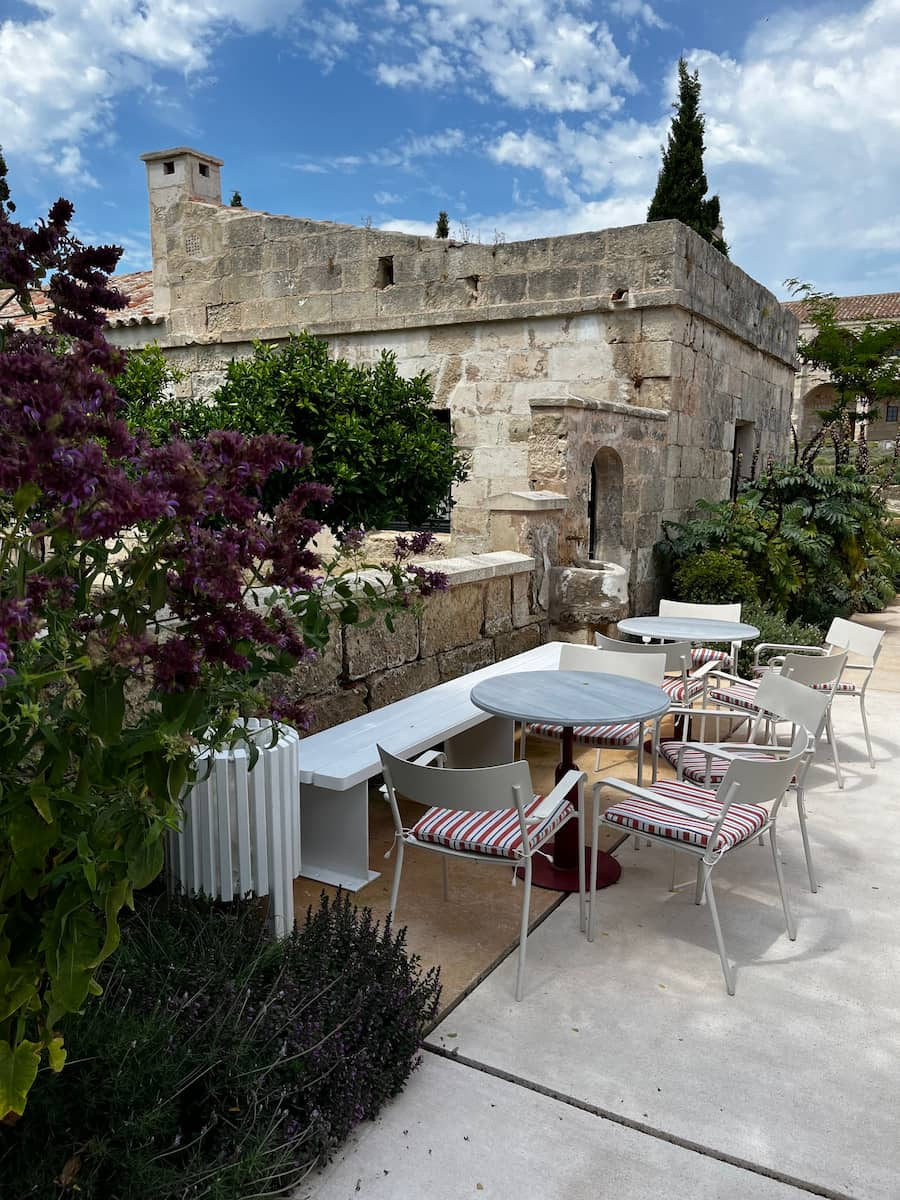
Cultural Experience: The volunteer-run restoration project offers guided tours in 4 languages, explaining the island’s 300-year medical history. A modern art gallery hosts 6 major exhibitions annually, featuring works from renowned artists like Miquel Barceló. The island’s botanical garden showcases 78 species of Mediterranean plants used historically for medicinal purposes.
Time Saver: Take the dedicated water taxi service that departs every 30 minutes from Mahón’s port – book the first morning departure at 9:30 AM to beat tour groups.
⭐ Best tour
- Port of Mahón Tour – You will get a privileged view on the scenic beauty of the port of Mahon and its numerous sites of historical interest. The tour also includes a visit to the prehistoric site of Trepuco where you can appreciate the most iconic monuments from the unique ancient history of Menorca!
2. 🏰 La Mola Fortress
Military Marvel: Built between 1848 and 1875, this fortress covers 270,000 square meters and features 3 kilometers of underground tunnels. The defensive structure includes 15 artillery batteries, 4 water cisterns with a capacity of 800,000 liters, and walls reaching heights of 15 meters. The fortress’s strategic position offers panoramic views across the Mediterranean for up to 20 kilometers.
Architectural Wonder: The complex demonstrates perfect examples of 19th-century military engineering, including innovative ventilation systems and acoustic communication channels. Visitors can explore 11 different routes through the fortress, each highlighting different aspects of military life and defense strategies. The site houses a military museum displaying 200 years of artillery evolution.
Money Saver: Purchase the combined ticket that includes transport from Mahón port, guided tour, and lunch at the fortress café for a 25% discount over individual bookings.
❓ FAQ
What are the must-visit beaches in Menorca?
The Spanish island of Menorca boasts over 70 stunning beaches and coves. The most beautiful include Cala Macarella and Macarelleta with their turquoise waters, Cala Galdana for family-friendly facilities, and Cala en Turqueta for its pristine white sand. The shores of Menorca offer everything from secluded coves accessible only by boat to well-equipped resort beaches, making it one of the best places to visit in Spain for beach lovers.
What are the top historical sites to visit in Menorca?
Visitors to Menorca should explore the prehistoric Talayotic sites, including Torre d’en Galmés (the largest ancient settlement in the Balearic Islands) and Naveta des Tudons (Europe’s oldest building). The capital of Menorca, Mahón, features Georgian architecture and the Museum of Menorca, while the historic center of Ciutadella showcases medieval streets and a Gothic cathedral. The entire island of Menorca is an open-air museum with over 1,500 archaeological sites.
What are the best outdoor activities in Menorca?
The Menorca marine reserve offers excellent snorkeling and diving opportunities. Hiking or cycling the Camí de Cavalls (a historic 185km coastal path) is one of the best ways to see the island. Kayaking tours explore hidden caves, while S’Albufera des Grau natural park provides birdwatching and nature trails. For adventure seekers, things to do on Menorca include jeep safaris and boat excursions to discover secluded beaches.
When is the best time to visit Menorca?
The best time to visit Menorca is during the shoulder seasons (May-June or September-October) when you’ll find pleasant temperatures around 20-25°C, fewer crowds, and lower prices. Summer (July-August) offers perfect beach weather but is busier, while winter (November-April) is quieter but still mild, ideal for hiking and cultural activities in Menorca.
What are the top cultural experiences in Menorca?
One of the best places to experience Menorcan culture is at the Cova d’en Xoroi, a cave bar offering spectacular sunset views. Visit local cheese factories, traditional wineries, and the gin distillery in Mahón. Don’t miss the summer festivals, especially the Sant Joan Festival in Ciutadella, featuring traditional horse shows. The Museum of Menorca provides insights into the island’s rich history.
